










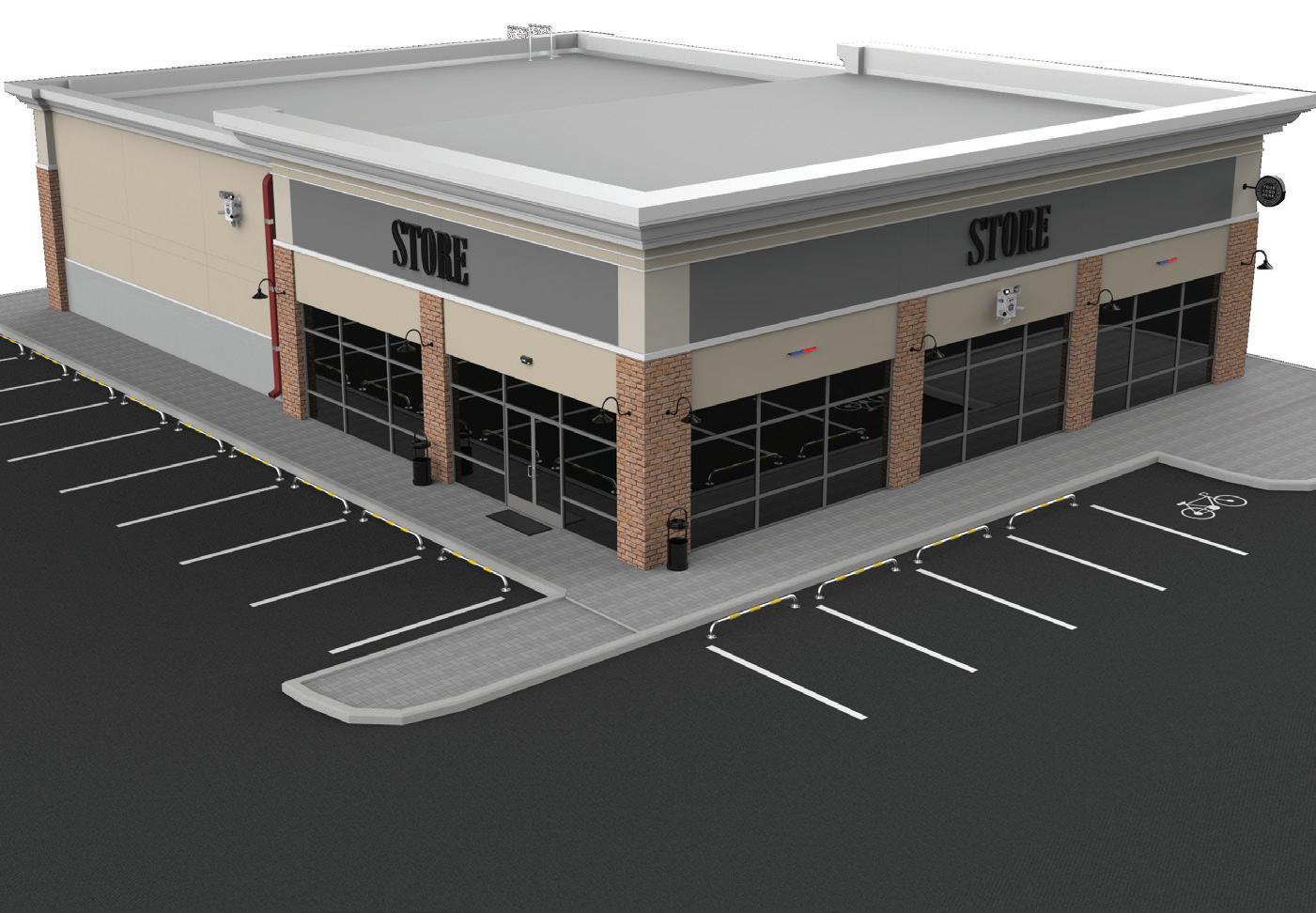





























Here are two sentences I have a problem with: “Higher rates of incarceration do not immediately lead to reductions in crime” and “While this issue of retail crime runs its course, the level of credence among retailers, trade associations, lawmakers, and customers is a delicate one.”
Sentences like these are why we have a problem. Both sentences were uttered by a reporter during a CNBC podcast in March of this year. Neither one is completely accurate. How would a member of the public with no knowledge of the deeper problem sort this out? Someone could listen to this report and take it at its face— it’s very heavily edited face—and think it’s gospel. I hope not.
Obviously, higher rates of incarceration do not immediately lead to reductions in crime. Any policy change takes time to impact society, especially one as complicated as crime. It’s unreasonable to expect that positive initiatives like the INFORM Act will have an impact on crime statistics within a short timeframe. Endemic problems take time and a holistic approach. Crime statistics are a lagging indicator, and they are complicated. In this special issue of LP Magazine focused on organized retail crime (ORC), Cory Lowe, PhD from the Loss Prevention Research Council helps us sort through and make sense of the data and understand why some is lacking.
What I really have a problem with in the second sentence from the reporter is the part “While this issue of retail crime runs its course...” This statement sounds passive, like waiting for a flu bug or chicken pox to finish up, break the fever, and move on. We cannot treat this increasing ORC trend (retailers know it’s a true trend) as a virus that will leave on its own. It needs proactive
Stefanie Hoover, CFI Editor-in-Chief
treatment because it has been growing over decades—and it’s not going to cure itself.
Just when it seemed like the gloves were finally coming off against ORC, the media and other ancillary parties jumped in and now we have some muddy water. Retailers and their employees are tired of being victimized and exhausted from the daily stress of rampant theft and violence and have started to be vocal about it. Retail associations are building consensus and working to communicate and partner with district attorneys and legislators. Most importantly, the public has finally started to catch on. To keep the conversation moving, retailers must find a way to communicate consistently to the media—and the public—what’s really happening.
With the media’s insatiable need for new stories, we’ve already begun to see a narrative around retailers inflating their loss numbers to support rising prices or new technology. Those who work in the field and see the empty shelves, violence, and proliferation of online marketplaces know that this is not the case.
In Jacque Brittain’s article reviewing LPM’s Violence in the Retail Workplace survey, there are startling reminders of how difficult it is to be on the frontlines. Our frontline associates are becoming numb to the constant violence, as the survey reflected. They feel safe in their workplace, yet the incidence of violence is increasing. One only has to read through the comments in the survey to see just how serious the problem is.
As an industry, we know that uniting against ORC and consistent messaging are two parts of a larger solution to a complicated problem. Loss prevention and asset protection professionals have grit and determination, and we certainly won’t let things like poorly worded sentences get in the way of what we know needs to be done.
Powered by The Loss Prevention Foundation
President Caroline Kochman
Caroline.Kochman@losspreventionfoundation.org
Vice President, Editor-in-Chief Stefanie Hoover, CFI StefanieH@LPportal.com
Senior Consultant Jack Trlica JackT@LPportal.com
Managing Editor Digital Courtney Wolfe CourtneyW@LPportal.com
Editorial Director Jacque Brittain, LPC JacB@LPportal.com
Retail Technology Editor Tom Meehan, CFI TomM@LPportal.com
Contributing Writers
Read Hayes, PhD Cory Lowe, PhD Walter Palmer, CFI, CFE Ben Skidmore
Shane G. Sturman, CFI, CPP David Thompson, CFI Manager Of Digital Operations John Selevitch JohnS@LPportal.com
Special Projects
Justin Kemp, LPQ Kevin McMenimen, LPC Karen Smith
Design & Production SPARK Publications info@SPARKpublications.com
Creative Director Larry Preslar
Advertising Strategist Ben Skidmore 972-587-9064 office, 214-597-8168 mobile BenS@LPportal.com
Subscription Services New Or Change Of Address LPMsubscription.com or circulation@LPportal.com
Postmaster
Send change of address forms to Loss Prevention Magazine 128 Fast Lane, Suite 202 Mooresville, NC 28117
Loss Prevention aka LP Magazine aka LPM (USPS 000-710) is published bimonthly by Loss Prevention Magazine 128 Fast Lane, Suite 202, Mooresville, NC 28117. Print subscriptions are available free to qualified loss prevention and retail professionals in the U.S. and Canada at LPMsubscription.com. The publisher reserves the right to determine qualification standards. For questions about subscriptions, contact circulation@LPportal.com or call 214-662-9548.. Periodicals postage paid at Mooresville, NC, and additional mailing offices.
© 2023 Loss Prevention Foundation
Loss Prevention LP Magazine LP Magazine Europe LPM and LossPreventionMedia.com are service marks owned by the publishers and their use is restricted. All editorial content is copyrighted. No article may be reproduced by any means without expressed, written permission from the publisher. Reprints or PDF versions of articles are available by contacting the publisher. Statements of fact or opinion are the responsibility of the authors and do not necessarily represent the opinion of the publishers. Advertising in the publication does not imply endorsement by the publishers. The editor reserves the right to accept or reject any article or advertisement.
Just when it seemed like the gloves were finally coming off against ORC, the media and other ancillary parties jumped in and now we have some muddy water.
As organized retail crime syndicates close in on your storefront, Riot Glass® retrofit security glazing systems remain steadfast in safeguarding your business from their aggressive attacks.



 By Jacque Brittain, LPC
By Jacque Brittain, LPC
The importance of workplace safety is not a new concept by any means. Retailers have long acknowledged the importance of providing a positive, proactive safety culture that supports an environment where both employees and customers feel safe and secure. It reflects the attitudes, beliefs, perceptions, and values that employees share. It provides a comfortable and welcoming atmosphere for customers. But in today’s retail environment, safety can take on a more literal and profound meaning. When violence becomes a factor, it takes things to an entirely different level.
Retail is a business; and businesses are in business to make money and turn a profit. But we all know the actual process is much more complicated than that. When looking at the retail industry from a global perspective, we must consider what it takes to build a successful retail business and make that business most profitable. Looking at some of the core concepts:
● We must take positive steps to establish an identity that will attract customers. Establishing our identity sets the tone for everything that follows.
● We want to provide a quality product at an attractive price. Consumers will look for value for their dollar, and if they don’t get it, they will simply shop somewhere else.
● We must display product in a way that makes it desirable to purchase. This concept must reach beyond the actual display of merchandise and extend to the general appeal, appearance, and efficiency of the store.
● We must take steps to make our customers feel important, that we will take care of them, we value their opinions and their business, and want them to return and offer their future business.
● We must provide an environment where customers and employees feel comfortable, confident, safe, and secure. Our business must provide an atmosphere where customers want to shop and should reflect the culture that best fits our core customer.
The most successful retail operations recognize these simple but critical concepts as essential. And while retail is a dynamic business, it can also be a delicate venture. Many retail operations
that falter or fail typically do so because they have in some way lost sight of one or more of these core business concepts. Unfortunately, one of those concepts has drawn considerable attention in recent years, causing significant concern for retailers, our customers, and our employees.

Workplace violence refers to any act or threat of physical violence, abuse, harassment, intimidation, or other threatening disruptive behavior that occurs in the work setting. It can range from threats and verbal abuse to physical assaults and even homicide. It can affect and involve employees, clients, contractors, customers, and other visitors. It can even impact those working from home. Regardless of how it manifests itself, workplace violence is a growing concern for employers and employees around the world. Workplace violence can strike anywhere at any time, and no one is immune. But while incidents of workplace violence can occur in most every working environment, there are certain types of businesses that are more prone to issues. According to the Bureau of Labor Statistics retail employers have reported experiencing some form of workplace violence at a rate substantially higher than other private industry establishments. Why? Research has identified factors that may increase the risk of violence for some workers at certain worksites. This would include working:
● In a setting where money is exchanged with the public.
● In positions where goods and services are delivered.
● With volatile and/or unstable people.
● In depressed economic communities and/or areas with high crime rates.
● Alone, in small groups, or in isolated areas.
● In stressful or unpredictable environments.
● In industries that provide services or care to customers.
● Where alcohol is served or sold.
● Late at night or early in the morning.
● In positions with extensive interaction with the public. Considering how many of these factors would directly apply to the business, it’s not difficult to imagine how just about any retail location might hold the potential for concern.
Any number of situations in the work environment can cause an escalation that leads to workplace violence. It may be the result of stress, threats, harassment, bullying, emotional abuse, intimidation, and other forms of misconduct in the workplace, but may also involve non-work-related situations such as domestic violence, stalking, or other incidents that make their way into the work setting. Workplace violence can be inflicted by an abusive employee, a manager, supervisor, coworker, customer, family member, or those involved in other criminal activity.
The National Retail Federation’s most recent National Retail Security Survey cites “guest-on-associate violence” as becoming a greater priority among retailers than any other crime. Further, when loss prevention executives were asked about their priorities, retail violence was identified as the most common concern. Whatever the cause or whomever the perpetrator, all are part of a problem that can create anxiety, fear, and a climate of distrust that is not to be accepted or tolerated in the retail environment.
“Employees are scared to work in the current retail environment. Customer escalations are becoming more commonplace.”
So, just how serious is the problem?
In addition to the incidents that we are aware of, how many go unreported? How is the problem impacting our customers and our employees? How strong are the programs that we currently have in place to combat the risk to our customers and
employees? How comfortable are our employees that these programs sufficiently address the problem?
To help us find some of those answers, LP Magazine asked the retail community to take part in a survey focused on many of the key questions and concerns regarding violence in the retail workplace. Those sharing their opinions were strongly encouraged to be open and honest in their responses, with the identities of all those participating in the survey remaining strictly confidential.
Invitations to participate in the survey were extended through mailing lists, extensive retail social media outlets, and LP Magazine’s daily newsletter Industry leaders representing retailers across the country were also contacted directly and encouraged to share the survey with their team members.
Participation in the survey was exclusively limited to retail employees. To represent the thoughts and opinions of those most accurately across the industry, we did not further limit participation based on experience levels or any other restrictions.
By providing an objective window into the thoughts, ideas, and opinions of retail practitioners regarding these areas, our goal was to gain a more comprehensive understanding of how retail employees perceive these important questions, open doors for additional discussion, and perhaps spark fresh thoughts and ideas on how we can best address these topics to further enhance our safety and security efforts.
Construction of the survey and the collection of survey results were managed through a professional survey platform to further protect the accuracy of the results, the integrity of the process, and the anonymity of the survey respondents. Approximately 400 retail employees participated in the survey. These respondents represented different levels of experience, backgrounds, positions, aspirations, and responsibilities. Only minor edits were made to respondents' comments to correct spelling and grammar, further protect their anonymity and alleviate similar concerns. Otherwise, the thoughts and opinions shared in these comments are strictly those expressed by the individual respondents as they completed the survey.
While retail practitioners from across the industry took part in the survey, 85 percent of those participating held positions in retail loss prevention or asset protection departments. Employees at every level of retail were well represented as part of the survey, with more than 32 percent of participants representing top retail leadership. Retail platforms from across the industry were also well-represented, with participation spread across the various retail formats.
Do retail employees believe that their workplace is safe? Overall, approximately 70 percent of survey respondents believe that their area of responsibility is safe from incidents of workplace violence. However, only 6 percent believe that their area of responsibility is very safe, while approximately 50 percent believe their area of responsibility is relatively safe. Approximately 28 percent of survey respondents consider their area of responsibility to be unsafe from incidents of workplace violence, with 5 percent believing their area of responsibility is very unsafe. Approximately 14 percent believe their area of responsibility is relatively unsafe. Comments indicate that most believe the problem has accelerated in recent years.
“Relatively safe based on the number, frequency, and severity of incidents that have occurred. We experience violent incidents weekly, ranging from verbal threats, physical assaults, and on very rare occasions the presence of a weapon.”
“Relatively” would appear to be a key word. Approximately 18 percent of survey respondents—or nearly one in five—indicate that they have been directly involved as a victim of workplace violence within their company over the past year. Of those surveyed, 23 percent say they were a victim of verbal assault, 14 percent were a victim of physical assault, 10 percent were the victim of bullying or emotional assault, and 3 percent say that they were the victim of a sexual assault in the past year.
Approximately 60 percent of survey respondents—or three in five—indicate that they have witnessed an incident of workplace violence within their company over the past year. 55 percent report they have witnessed a verbal assault, 49 percent witnessed a physical assault,
continued on page 12
To the best of your knowledge and experience, which of the following types of workplace violence currently pose the greatest or most serious risks to employees and customers in your area of responsibility (check all that apply).
the last year, I have witnessed an incident(s) of workplace violence within my company.











Continued from page 10
42 percent witnessed bullying or emotional assault, and 21 percent say they witnessed a sexual assault in the past year. Most of the comments provided by respondents reported that they have witnessed multiple incidents of workplace violence.
While many of our respondents are loss prevention professionals that may be more likely to deal with conflict situations simply based on the nature of the position, these numbers would still tend to be eye-opening.
“In the past seven months, I have had to investigate the shooting death of an employee on our sales floor, the shooting of a guard that was hospitalized for several months and countless assaults on our employees and guards by people who believe that they are entitled to steal from our store without being approached.”
What type of workplace violence currently poses the greatest or most serious risk to employees and customers? Based on survey results, customer incidents are a primary concern, with 68 percent of respondents stating that these issues pose the greatest or most serious risk to employees and customers in their area of responsibility. This was followed closely by criminal issues at 63 percent, active shooter situations at 43 percent, co-worker incidents at 40 percent, and domestic violence issues at 28 percent. Participants voiced strong opinions regarding each type of concern.
In my opinion, during the past 12 months, an incident of workplace violence affected employees in my area of responsibility in the following ways (check all that apply).
“These are among the most controllable aspects of our business. We can get to know and monitor our team members, but we don’t know who is coming in and what state of mind they are in.”
Customer incidents are also the most frequent concern, with 69 percent of respondents stating that these issues pose the most frequent risk to employees and customers in their area of responsibility. This was followed by criminal issues at 57 percent, coworker incidents at 33 percent, active shooter situations at 16 percent, and domestic violence issues at 16 percent.
“It’s all about employee and customer safety. Active Shooter may get all the headlines but crime on employees and customers is a daily occurrence.”
Approximately 36 percent of survey respondents indicate that there have been twelve or more incidents of workplace violence in their area of responsibility over the past twelve months. Approximately 7 percent report there have been 10-12 incidents, 7 percent say there have been 7-9 incidents, 15 percent state there have been 4-6 incidents, and 23 percent say there have been 1-3 incidents. 12 percent report that there have been no incidents of workplace violence in their area of responsibility over the past twelve months. Keep in mind that these numbers will be impacted by the total area of responsibility assumed by each of the respondents.
“Shootings and gun-related incidents near our store or in the mall have increased to the point that there is now an incident every weekend.”
Approximately 55 percent of survey respondents indicated that the most recent incident of workplace violence occurred within the last thirty days. Approximately 20 percent reported that the most recent incident occurred within 1-3 months, and 10 percent stated 4-6 months. 8 percent of respondents say it’s been more than a year since the last incident occurred in their area of responsibility.
“During the time I started to take this survey, I had to stop and deal with a violent outburst between two employees...”
While respondents see a wide spectrum of issues contributing to the increase in violence in the retail
workplace, respondents believe the broad erosion of consequences for crime is a primary concern, with 78 percent indicating that this is contributing the most to the problem. This was followed by social and cultural norms that encourage violence at 69 percent, poor economic issues at 61 percent, increased stress in the workplace at 47 percent, and low staffing levels, extended shifts, and overtime requirements at 44 percent.
“Every one of these has an impact. However, the number one reason the crimes are rising is the lowering of the consequences for the criminal.”
How concerned are employees with the threat of violence? We asked participants to rank their concerns on a scale of 1-10, ten being extremely concerned and one being not concerned at all, in several primary areas of concern. We then asked them to offer their thoughts on whether violence in these areas has increased, decreased, or remained the same over the past five years in each category:
● Survey respondents averaged a response of 7.2 regarding their concern with the threat of criminal activity (shoplifting, robberies, organized retail crime, and other crimes) leading to violence in the workplace. Approximately 90 percent of survey respondents reported that the threat in their area of responsibility has increased over the past five years, with 55 percent indicating that it has significantly increased.
“ORC at all levels seem to have been emboldened by the lack of prosecution.”
● Participants averaged a response of 6.3 regarding their concern with the threat of customer activity (disgruntled shoppers and other incidents) leading to violence in the workplace.
● Approximately 87 percent of survey respondents reported that the threat in their area of responsibility has increased over the past five years, with 35 percent indicating that it has significantly increased.
“Customers are growing more disgruntled every day due to economic issues such as rising prices, loss of jobs, which causes some customers to lash out in ways they normally wouldn’t.”
● Participants averaged a response of 4.8 regarding their concern with the
threat of co-worker activity (current or past employees of the business) leading to violence in the workplace. Approximately 52 percent of survey respondents reported that the threat in their area of responsibility has increased over the past five years, with 7 percent indicating it has significantly increased.
“I do not have enough data to answer this properly. However, we had a co-worker murder another employee in the store over the last year.”
● Participants averaged a response of 4.4 regarding their concern with the threat of domestic violence (when the perpetrator has no legitimate relationship to the business but has a personal relationship with the intended victim) leading to violence in the workplace.
● Approximately 38 percent reported that the threat has increased over the past five years, with 7 percent indicating that it has significantly increased.
“This may be in part due to better reporting and programs designed to educate and encourage participation.”
● Survey participants averaged a response of 5.7 regarding their concern with the threat of active shooter incidents in the workplace.
● Overall, survey respondents believe that the recent incidents of workplace violence have impacted store employees in many ways, to include general fear concerns (74%), morale (66%), turnover (46%), and productivity (42%). 9 percent don’t believe that recent incidents have affected employees, and 6 percent were unsure.
“All of these are outcomes. We have had talented people leave the job over safety and security concerns especially in cities like San Francisco, LA, and NYC.”
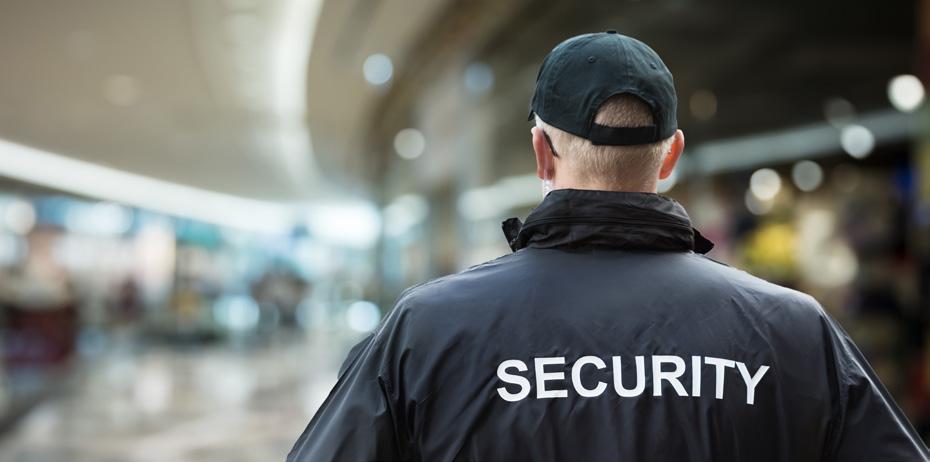
“Fear to come to work at the mall is one of the most common responses. Employees also threaten to quit. Both morale and productivity are impacted as well although that is harder to measure.”
Survey respondents were not shy about verbalizing their thoughts on more, better, more frequent, updated, and more interactive training opportunities. This was a common
theme among most respondents. Below is a sampling of the comments and suggestions offered:
“Training needs to be ongoing and interactive. To be able to effectively handle a workplace violence incident you need to know how you will react.”
“Specific workplace violence trainings and new adapted equipment such as bodycams.”
“Ensure training is updated and available on a mobile device. Avoiding disruptive behavior training is critical.”


“More elevated training for leaders. Currently leaders receive the same training as hourly associates.”
“Make training content relevant for our company. Stop using the same video every other company uses and make it conform to a grocery store not an office building.”
Retail is in a constant state of change, directly influenced by the wants and needs of the retail customer. This has greatly accelerated in recent years, inspired by significant advancements in technology and impacted by countless external motivations that affect our day-to-day operations. Unfortunately, these influences have also led to some regrettable outcomes as well, with aggression and violence often the result.
Understanding the reasons behind these changes is important, and using this information will lead to more effective, long-term answers. But some solutions can’t wait. Respondents have emphasized some points that we already know, making it clear that there are too many
situations where our facilities feel unsafe, and people are getting hurt. The emphasis on more, better, more frequent, updated, and more interactive training opportunities is a critical message. There’s a need for more focused legislation. There will always be a need for updated and relevant material for the retail employees. But policies, programs, and even legislation will only take us so far. Those efforts still mean very little if not appropriately implemented and emphasized by the leadership in the stores and carried out by those employees on the front lines. Some companies are doing a tremendous job addressing these issues, building programs, and implementing policies and procedures that support the need for growth and development. Others have opportunities. However, if one thing was made clear, it’s that there is never a finish line. For those truly interested in making a difference, we would encourage you to review the full report on the Violence in the Retail Workplace survey, paying particular attention to the comments shared by those offering their thoughts and opinions.
Jacque Brittain, LPC, is editorial director for LP Magazine. Prior to joining the magazine, he was director of learning design and certification for Learn It Solutions, where he helped coordinate and write the online coursework for the Loss Prevention Foundation’s LPC and LPQ certifications. Earlier in his career, Brittain was vice president of operations for one of the largest executive recruiting firms in the LP industry. He can be reached at JacB@LPportal.com.
To download the full report, scan the QR code above.EDITOR'S NOTE: The original article and its footnotes have been edited. Members of the Loss Prevention Research Council can access the full version via the LPRC Knowledge Center. Alternatively, you can contact cory@lpresearch.org.
During a recent earnings call, the chief financial officer of one of the largest retailers in the world suggested their organization might have “cried too much” in 2022 when shrink was approximately 3.5 percent of sales. This executive then went on to describe how they have managed to “stabilize” shrink by spending “a fair amount,” including deploying “incremental security” in the most recent quarter. Finally, the executive suggested that the organization was continuing to find efficiencies in their security program,
and that they “have a fairly good line of sight to new programs going in.”
To summarize, all of this suggests that:
(1) the organization was experiencing high levels of shrink;

(2) the high level of shrink has been managed through effective programs and resource allocation; and
(3) the organization is continuing to refine their strategy to continue to manage these challenges. This kind of presentation is what one would expect from a chief financial officer during an earnings call—that is, you
would expect a CFO to reassure investors that the organization is being effectively managed. Despite all this, many media outlets seized on five words— “maybe we cried too much.” These words were interpreted as meaning that retail theft had been overstated, and many in the media characterized concerns about retail theft as a “moral panic.”
But do concerns about retail theft specifically, or retail crime in general, really constitute a “moral panic,” or do many (journalists included) just misunderstand the problem? More importantly, are concerns about retail crime really about retail theft, or is the public really concerned about more serious, aggressive, and brazen retail crimes? This article seeks to answer these questions. However, to determine whether the retail crime problem has been overstated or whether it might be misunderstood, we need to understand the nature of retail crime in general. It’s also important to first define our terms, beginning with “moral panic.”
According to sociologists, moral panics occur “when threats, dangers, or traumas are defined in a highly exaggerated manner.” Others define it as a “type of social deviance characterized by a heightened sense of threat in some segment of the population [that suddenly emerges and subsides] and [involves] a disproportionate response relative to an objectively assessed threat level.” A key element of most definitions of “moral panic” is that it includes an exaggerated characterization of a problem and a disproportionate response to the problem.
Some well-known moral panics involve the satanic panic of the 1980s, concerns about violent imagery in video games, and the glorification of deviant behaviors in popular music.
Some sociologists have criticized the term “moral panic” for its ideological and value-laden nature, and because the term “moral panic” suggests that the “concern is irrational or not genuine.” In other words, the concept of a “moral panic” is problematic because the
extent of a problem is dependent on subjective moral judgments. For example, some might see certain crimes as seriously and morally reprehensible, while others may not, and these perceptions can change over time. Therefore, it is impossible to determine whose moral concerns are more accurate or proportionate without using one of the groups’ standards to determine whether the extent of a social problem is being exaggerated.
Despite the problems with the concept of a “moral panic,” we can examine whether public concern seems to exceed levels of concern when there were similar or lower levels of crime. However, this requires that we have both (1) valid crime data; and (2) valid data on levels of public concern about retail crime. We will start by discussing the data on public concern about crime generally, and retail crime specifically.
The Gallup organization has been tracking levels of concern about other crimes for decades. Results show that the public is increasingly concerned about crime and criminal victimization, particularly for more serious crimes such as muggings, murders, or sexual assaults. In fact, the percentage of Americans occasionally or frequently concerned about being mugged rose from 33 percent to 40 percent between 2021 and 2022. There was also an 8 percent increase in concern about being sexually assaulted, and a 7 percent increase in respondents concerned about being murdered. One very interesting aspect of the Gallup results is the increase in concern was much greater for violent crimes, such as those mentioned above, than non-violent crimes such as one’s home being burglarized while not at home, or having their car stolen or broken into. In general, the American public is increasingly concerned about more serious, violent crimes.
Unfortunately, the Gallup data is not specifically focused on
retail crimes. Another approach to examining concern about retail crime is to use Google trend data. Figure 1 on the next page provides the popularity of searches relative to the peak, which in both cases occurred around the beginning of 2022. This peak was achieved after a steady rise in interest from 2020 onward, indicating that interest in retail crime generally, and organized retail crime specifically, has increased according to Google searches.
Finally, in 2022, the Loss Prevention Research Council (LPRC) conducted its ORC Across the States survey. 177 loss prevention practitioners, including multi-store managers and ORC investigators throughout the United States, participated in the survey. We initially asked respondents to identify which geographic areas in the US they served, and then asked a series of questions about organized retail crime and its consequences. When asked, “How much of a problem is fear of crime among store-level associates in the areas you serve?” approximately 72.6 percent reported that fear of crime is a moderate or major problem.
Retail shrink, a key metric for most retail loss prevention teams, is an extremely poor indicator of overall retail crime for many reasons. The most important and obvious reason is because it is an imprecise metric. That is, since shrink is caused by a variety of factors, including criminal and non-criminal causes, it reflects much more than the impact of retail crime. If retailers could definitively state the proportion of shrink due solely to crime, then we would have a measure that could be used to track retail crime. Unfortunately, this is impossible.
Nevertheless, shrink is an indicator of how much merchandise retailers are losing, and retail crime is a contributing factor. The 2022 NRF National Retail Security Survey (NRSS) conducted in partnership with the LPRC was distributed to loss prevention executives representing sixty-three retailers, with the vast majority being national retailers. Results indicated that the
On average, NRF NRSS participants reported a 26.5 percent increase in ORC incidents.
ORC Across the States Survey participants reported a 32.9 percent increase in ORC incidents.
average shrink among participating retailers in 2022 (1.4% of sales) was in line with the 5-year average (1.5% of sales). If shrink was a valid measure of the extent of retail crime (it is not), then this would suggest that retail crime remained the same. However, all other available data suggests that retail crime has not remained the same.
Retail shrink is caused by a variety of factors and only a portion of total shrink is due to criminal causes. Further, these criminal causes can be subdivided. For example, in the retail industry, offenders are often discussed in terms of opportunistic and organized retail offenders.
Opportunist offenders include those who commit retail crimes when the opportunity arises—they are not necessarily seeking out or creating opportunities to commit crime in an organized and systematic manner.
On the other hand, organized retail offenders systematically seek out or create opportunities to engage in retail crimes for the purpose of financial gain.
The results of the NRF’s NRSS clearly revealed that retailers are extremely concerned about organized retail offenders, and this has become an increasingly important priority for most participating retailers over the
past five years. However, the population of organized retail offenders can be further subdivided into at least two broad groups.
On one hand, there are organized retail offenders and networks who are highly sophisticated, often taking a strategically non-violent approach. These individuals and networks often operate in much larger areas. For this group, violence is an unappealing strategy by bringing greater attention to their crimes. However, these organized groups also have the potential to cause massive economic harm in terms of merchandise theft and their disruption of legitimate markets.
On the other hand, there are those who are much more likely to use
violence and commit crimes in a much more brazen manner. They typically operate in a much smaller, more local area, and typically less sophisticated and organized in their approach. These offenders tend to generate massive physical and psychological harms, resulting in a greater impact on human safety.
There is evidence that more serious offenses, such as organized retail crime and retail violence, are increasingly problematic for retailers. In the 2022 NRSS, results showed that guest-on-associate violence had become a greater priority for 77.6 percent of participating executives; external theft excluding ORC had become a greater priority for 74.1 percent; and organized retail crime had become a greater priority for 70.7 percent of participants.
The NRSS also asked participants how much ORC incidents had increased at their organization between 2021 and 2022, according to their internal records. On average, retailers reported that known ORC incidents increased 26.5 percent between 2021 and 2022.
In the LPRC’s ORC Across the States survey, respondents reported that, on average, there had been a 32.9 percent increase in the number of recorded ORC incidents. When aggregated to the state level, it was clear that respondents were reporting greater increases in some states (e.g., the Northeast and Western states), than in others (e.g., the South).
In the ORC Across the States Survey, participants reported that, on average, only 50.45 percent of retail crimes are reported to police.
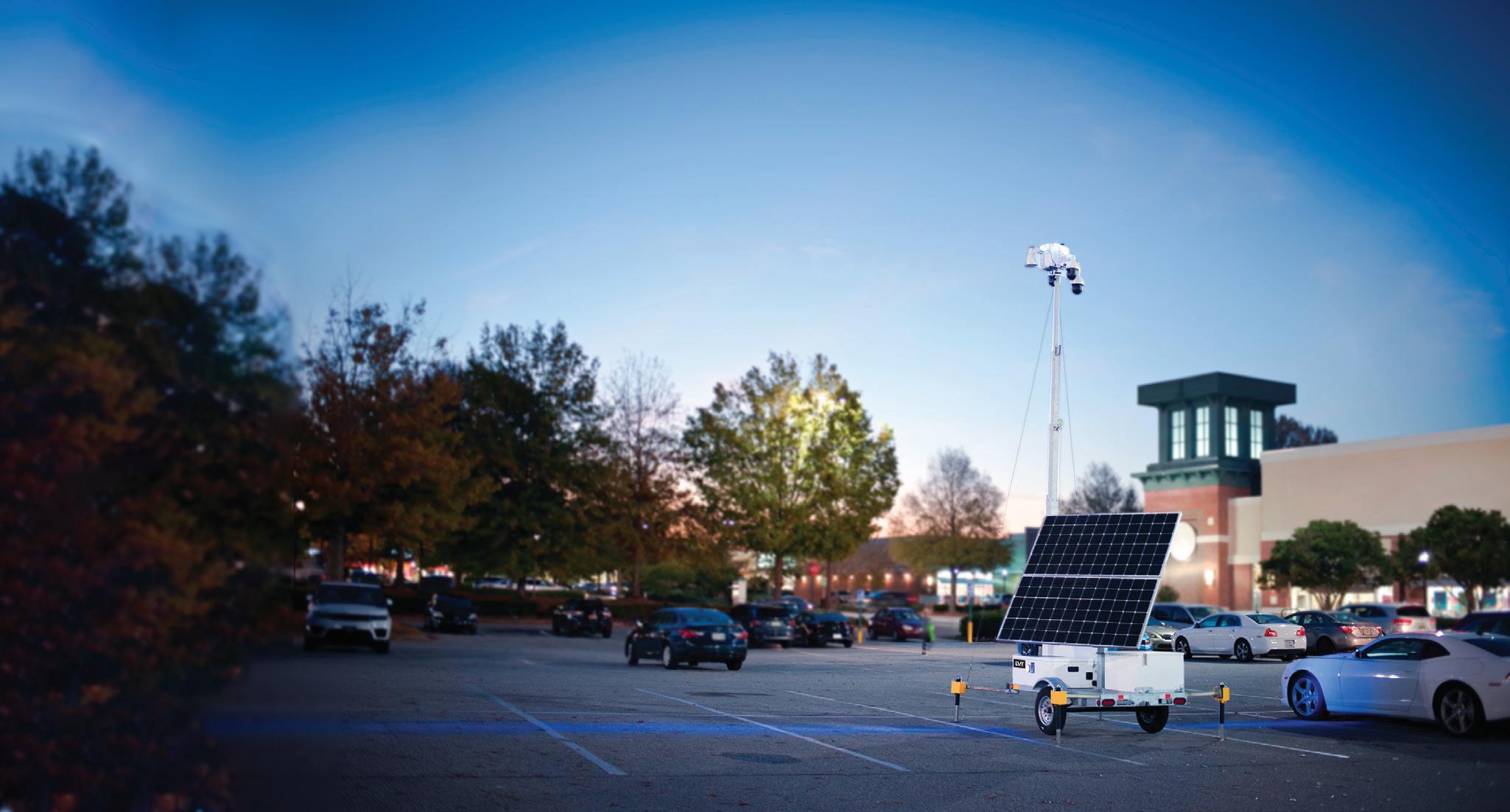
% 33 % 39
ORC:
Continued from page 16
Unfortunately, the sample only included a small subset of all loss prevention practitioners who serve multiple store locations.
There are also other sources of data, such as official crime data. The most reported form of data consists of crimes reported to the police. For example, the Federal Bureau of Investigation’s Uniform Crime Reporting Program and National Incident-Based Reporting System consist of crimes known to police. However, many cities also publicly report the number of reported crimes for a given week or month, and typically include how that changed month-over-month.
Crimes known to police are just one type of official crime data. Others include arrests, prosecutions, or the number of incarcerated persons, just to name a few. All these types of data have problems, and it is well-known that sources of data “closer” to the crime tend to more accurately reflect the amount of crime in a given area. In the case of retail crime, retailers’ incident data will tend to include the most incidents, followed by crimes reported to police, arrests, prosecutions, etc. This is because incidents are filtered out at every stage. Only a portion of incidents are reported to police, only a portion of reports lead to arrests, only a portion of arrests lead to prosecution, etc.
Nevertheless, when most refer to official crime data, they are referring to crimes reported to police. There is a good bit of research on factors that influence whether crimes are reported to police. For example, research suggests that many engage in a cost-benefit analysis when deciding whether to report crimes. They consider the likely costs of reporting a crime (e.g., time, effort, likelihood of retaliation, etc.) and the likely benefits (e.g., property recovery, enhanced security, justice being done, etc.).
If the benefits don’t exceed the costs, there is no reason to report
the crime. However, there are other factors that affect whether crimes are reported to police, such as the victims’ perceptions of law enforcement, perceived severity of the crime, and the influence and encouragement of members of one’s social network.
In the LPRC’s 2022 ORC Across the States survey, we asked participating loss prevention practitioners to estimate the percentage of known retail crimes they reported to police. On average, respondents said only 50.45 percent of known retail crime incidents are reported to law enforcement in the areas they serve. Next, we asked participants why crimes are under-reported in the areas they serve. The two most cited reasons involved inaction or lack of follow-up by law enforcement and prosecutors. 80.92 percent said that crimes were not being reported to police because law enforcement will not respond, investigate, or make an arrest, while 63.4 percent reported that crime is under-reported in the areas they serve because prosecutors are unlikely to prosecute crimes. Unfortunately, in recent years, reporting might have also declined due to law enforcement agencies’ ability to hire and retain officers. Research shows that increased law enforcement staffing levels are associated with increased crime reporting while declines in staffing levels are associated with decreased crime reporting. According to the Police Executive Research Forum’s survey of 184 law enforcement agencies, from 2020 to 2021, officer staffing levels dropped by 3.48 percent. This was due to a combination of factors, including a 20.5 percent decrease in hiring and a 40.4 percent increase in resignations, among other things. Fortunately, during 2021, hirings increased by approximately 20.8 percent and the rate of retirements has slowed down. With this said, it’s clear from discussions with loss prevention practitioners and organized retail crime investigators that they understand how challenging the
past few years have been for so many law enforcement agencies.
The FBI provides official crime data through their Crime Data Explorer up until 2021. However, retail locations are limited to convenience stores, gas stations, grocery stores, liquor stores, shopping malls, and specialty stores. Data does not include drug stores because these are categorized with doctors’ offices and hospitals. All forms of commercial and office spaces are grouped together, and retail warehouses are not distinguished from other types of warehouses. Nevertheless, Figure 2 on page 16 provides the rates of property and violent crimes known to police for the specified retail sectors per 100,000 US residents.
Figure 3 indicates that property crimes known to police have declined over the past five years, while violent crimes known to police have increased. However, the linear trend line is a bit misleading because the apparent increase in violent retail crimes is primarily due to the increase in 2021. If the data for 2021 were removed, the violent crime trend would appear to be relatively flat.
Of course, Figure 3 only includes national data, and crime fluctuates differently across different cities and states. Additionally, as discussed, a large portion of the crimes known to retailers are not reported to police (nearly 50%, on average, according to loss prevention practitioners). Furthermore, we cannot be sure if the proportion of crimes reported to police fluctuates year-over-year, and, if so, how much it fluctuates. For example, if the proportion of property crimes reported to police decline, then, hypothetically speaking, the retail crime trends could appear to decline simply because of a decline in reporting among retailers.
But the problems with the official data do not stop there. According to the NRSS, in 2021 the cities and metropolitan areas that were most affected by organized retail crime included: Los Angeles, California; San
In the ORC Across the States Survey, 80.92 percent of participating loss prevention practitioners said that lack of action by law enforcement was a reason for under-reporting crimes.
63.4 percent reported that prosecutors’ failure to prosecute was a reason for under-reporting crimes.
Francisco/Oakland, California; New York, New York; Houston, Texas; Miami, Florida; Chicago, Illinois; Sacramento, California; Seattle, Washington; Atlanta, Georgia; and Dallas/Fort Worth, Texas.
Half of these cities and metropolitan areas did not submit any data to the FBI for 2021. In fact, 47 percent of all jurisdictions that served areas with more than 500,000 people did not submit data for all 12 months of 2021, and 35 percent of these large jurisdictions did not submit any crime data to the FBI for 2021. Moreover, of the 18,819 US agencies that could have submitted data in 2021, 59 percent did not submit data for the full year, and 38.7 percent did not submit any crime data to the FBI. With this much missing data, it becomes very difficult to determine what crime trends are, especially since the participating jurisdictions change each year. The problems with the official data are well-known among criminologists and criminal justice scholars, but others may not be familiar with these limitations.
Is retail crime overstated or misunderstood? The only answer I can give is that crime statistics and retail crime are probably misunderstood by many people, which may lead them to believe retail crime is understated. Many people are unfamiliar with the way in which official crime data is generated; therefore, they uncritically accept the statistics as they are presented. However, as discussed throughout this article, only a fraction of known retail crime is reported to police and shrink is generated by much more than crime. Therefore, these data are of questionable validity in discussions about trends in retail crime. Nevertheless, even the official data indicates that approximately 20-25 percent of all property crimes occur in retail locations each year, which seems like something the public might be justifiably concerned about. Furthermore, according to industry research, the number of ORC incidents increased in
Note: To avoid exaggerating or understating the apparent trends, the minimum and maximum for the y-axes have been set to approximately three times the standard deviation for the violent and property crime data.
the past year by somewhere between 26.5 and 32.9 percent.
Of course, it is possible that those who refer to concern about retail crime as a “moral panic” have ideological commitments that encourage them to selectively use data that supports their positions. I know that I’m quite passionate about retail victimization and preventing it and therefore must restrain myself to ensure I’m not cherry-picking data that confirms my position. However, Hanlon suggests that we should “never attribute to malice that which is adequately explained by stupidity.” In other words, the simplest explanation is that those who refer to concern about retail crime as a moral panic are simply ignorant of the different types of retail crime, different sources of retail crime data, and the limitations of different data sources.
Finally, this article started out with a discussion about how some journalists are referring to retail theft as a moral panic. This implies the public is concerned about run- of-the-mill retail theft. There is an old saying in media: “if it bleeds, it leads.” If the retail crime problem was merely about “theft,” then I doubt that many in media would spend any time on these stories. This is not to say they wouldn’t be justified in discussing retail theft, since 20-25 percent of property crimes occur in retail
spaces, and the majority of these are thefts. However, the stories about retail crime that receive the most attention are stories of retail workers being murdered, thieves sweeping shelves of product into bags and exiting stores, and retail offenders assaulting department store workers as they carry racks of clothes out of the store. Both industry data and the available official crime data suggest violent crimes in retail spaces are becoming increasingly problematic, and industry data suggests that ORC is becoming a more serious problem.
To characterize retail crime in this country as a “moral panic” is inaccurate, dismissive of much of the data, and disrespectful of the real concerns of the American public, including retail workers.
Cory Lowe, PhD is a research scientist at the Loss Prevention Research Council. He received his doctorate in criminology in 2020 from the University of Florida where he specialized in crime and delinquency prevention, communities and crime, criminological theory, and research methods and data analysis. Lowe has published in peer-reviewed journals and other scholarly publications on the causes of crime, crime and delinquency prevention, and the factors associated with substance use and delinquency. He can be reached at Cory@LPresearch.org.

An exhaustive investigation into a multi-state organized retail crime (ORC) ring came to a head on a crisp and sunny fall day in Chicago.
October 6, 2022, saw retailers and law enforcement from across the greater Chicago area convene in a metro police department parking lot for final marching orders. Loss prevention professionals huddled together with local, county, and federal partners to go over assignments and last-minute plans to execute multiple search warrants around Chicago, while similar meetings happened hundreds of miles away in California.
Those present in the parking lot nervously chatted in groups as SWAT teams and their fortified vehicles readied to roll out in the background.
A detailed and meticulous plan was in place and enough manpower was on hand to handle any issue. Later
that morning, over a dozen warrants were executed, eight arrested, and an estimated $7.5 million in stolen goods recovered. This proved to be a significant and successful investigation on many levels, but that is not the primary takeaway from this story. The Chicago-based investigation is a textbook case on how to develop partnerships and build high-level ORC investigations for better outcomes.
The investigation itself began with what was viewed at the time as a simple retail theft arrest in Wilmette, Illinois, a quiet village north of Chicago with a population just under 30,000. Patrol officer Connor Cavanaughr responded to a retail theft of over- the- counter (OTC) medications from a local pharmacy.

However, what could have been approached as just another case of catch-and-release shoplifting turned into a major investigation due to the officer asking questions—the right questions— which led to uncovering a major fencing operation.
Recognizing the signs of a potential ORC operation, whether through the products stolen, the methods used, or the individuals involved, and then having the foresight to ask the appropriate questions of the perpetrators to gain cooperation and further develop the case, is a skill critical to successful ORC investigations. This foundational step set the groundwork for everything that followed. The Wilmette police department then leveraged its well-established partnerships with other law enforcement agencies
and retail loss prevention teams to move this information through the pipeline. While it may have started with modest beginnings, the investigation lasted over a year and involved thousands of man-hours from law enforcement and retail loss prevention teams.
As is true in any metro area, multi- jurisdictional cases in Chicagoland can be complex and require unwavering dedication to communication, follow- up, and documentation. Commander Mike Robinson with the Wilmette police department spoke to LP Magazine about what works and what doesn’t when collaborating. Robinson stressed that retailers can’t wait until they need something to reach out. Wilmette had started working with retailers many years prior to this recent large case. But back in 2017, they had just begun to work more complicated retail theft cases considered to be ORC.
Why Wilmette? According to 2021 census data, median household income in Wilmette is $174,000 a year and 83 percent of residents have a college degree. The village boasts a crime level well below the national average and is an attractive place to live and raise a family. It may also be an attractive stop-over for these types of criminals since it has a variety of retail locations in an easily accessible location—right off a major interstate and within proximity to Chicago. As a smaller department with forty- four sworn police officers and four detectives, retail thieves may have the mistaken belief that their deeds will fly under the radar, as opposed to a larger municipality with specialized task forces and other resources.
Whatever the reason for the activity, Wilmette village leadership and its police department have responded in a visionary way—they’ve taken retail theft seriously. According to Commander Robinson, twenty-year veteran of the Wilmette police department and commander of the North Regional Crimes Burglary Task Force, Wilmette police started to become involved in ORC cases in 2017. The department consciously shifted its focus from low-level, opportunistic shoplifters to
the organized offenders, primarily the fence or crime boss.
The year the department increased their retail investigations isn’t a surprise, as this coincides with a rise in drug-related crimes and weakened legal consequences for retail theft. According to testimony provided by US representative Tim Murphy from Pennsylvania on March 17, 2017, fentanyl use exploded around this time, with the DEA issuing a nationwide alert in 2016.
“They were calling the rise in fentanyl seizures an unprecedented threat,” Murphy reported. “Customs and Border Protection data shows an 83-fold increase in the amount of fentanyl seized in 3 years.” This most likely has influenced retail crime levels, with retailers being easy targets, converting stolen goods to cash hardly a difficult task, and fentanyl a highly addictive and easy to acquire drug.
With reporting on these types of crimes inconsistent across retailers, it’s difficult to pinpoint exactly when the problem started. Many retailers experience theft but then don’t report it as they feel the police have more important things to do, or the thief will most likely not face any significant consequences because of their crimes. In Illinois, the felony threshold for retail theft lowered to a more stringent $300 in 2010; but in 2016 Cook County changed the threshold to prosecute felony retail theft to $1000 and above. This, combined with an internal policy— widely publicized by Cook County State’s Attorney Kim Foxx—that the county would not prosecute ANY retail theft under $1000 made for a perfect storm in the most populus county in the state of Illinois. And retailers in metro Chicago have felt the impact ever since. The rise in the fentanyl epidemic which increased demand for cash, coupled with minimal consequences for getting caught stealing in a retail store, have made retailers ripe for the picking when it comes to crime.
Many of the lower-level retail theft offenders, those who are in the stores grabbing the items, are primarily driven by the need to fund their addictions. These offenders may be recruited from homeless encampments, gangs, or other communities that have high levels of addiction.
“This is a systemic problem and is not changing anytime soon,” said Robinson. “Courts are overwhelmed with these types of offenders who are then released due to prosecution limitations in a revolving door of recidivism. There are not enough resources to help the addicts or adequate jail space to keep them off the streets. These offenders are not typically employed, so stealing becomes an easy source of income, which also makes them easy targets for the ORC groups recruiting these individuals.”
Robinson also feels, “If there is no penalty, there will be no change in behavior.” Without deterrents, retailers are easy marks. Thieves know that retailers have a limited ability to stop them in the act and they also know that penalties are close to nil if they do get caught. Legislatively, this creates a situation where the benefits of ORC are seen by the offenders as far outweighing the potential penalties, which inflames the problem.
According to Patrick Walsh, ORC manager with Kroger who participated in the investigation, “in Chicago, there is a strong nexus to narcotics sales. Subjects who operate fencing rings typically prey on vulnerable members of society, including those who struggle with substance abuse. The stolen products are purchased for below retail value and the money received is used to purchase narcotics immediately after.”
Wilmette came to the realization that the only way to make a significant reduction in the repeat retail crime they were seeing steadily increase was to target the ORC leaders and remove the financial incentive to commit these thefts in the first place.
Robinson emphasized, “Why steal the OTC medicine if you can’t sell it anywhere?” His department felt they would have the biggest impact by finding and stopping the fence. “Having the support of the administration and village management has been integral to our success. They have been able to see the problem from a bird’s-eye view and had the fortitude to trust our approach. It’s a lot of effort, time, and money that goes into these cases and having your boss, and elected officials, support is crucial.”
The nature of the theft scheme required the utmost cooperation and

The rise in the fentanyl epidemic which increased demand for cash, coupled with minimal consequences for getting caught stealing in a retail store, have made retailers ripe for the picking when it comes to crime.


communication among the investigators. The street-level thieves would take their ill-gotten goods to local storefronts owned by the head of the ORC group. Based mostly in impoverished neighborhoods, these store fronts at times operated like a local bodega, selling discounted product. Many of these areas have become retail deserts, and while the surrounding community may appreciate a place to buy their needed goods, the criminal element that comes along with these storefronts has a serious negative impact. They may see increased narcotics sales, property crimes, prostitution, assaults, and other crimes.
Once at the storefront or fence, the thief would receive cash for the goods they stole, in this case primarily OTC product. The goods would then be sent to a warehouse, or a “cleaning” facility, where they would be stripped of identifiers or other security tags.

On the date the warrants were served, October 6, at least one cleaning facility was found with what appeared to be a potential situation involving human trafficking in the interior of the facility. Approximately six individuals were found inside, with the doors padlocked and no running water or toilets available. According to one source, those locked inside may have been individuals who were in the country illegally and working off their debt to the crime boss. Meanwhile, various leaders of the group were living lavish lifestyles in the suburbs, with large amounts of cash on hand—enough to purchase a personal jet.
Once the goods had been cleaned and made ready to ship, they would either be sold back to the local storefronts, peddled through online marketplaces, or purchased by “wholesalers” who appeared to be running legitimate businesses. It’s unclear whether any of the goods made it back into the retail supply chain that consumers rely on for safe OTC products. The cases against the eight individuals are still pending.
Over the last several years, Wilmette PD has been involved in several ORC investigations that spread across multiple jurisdictions. They have a strong partnership with the Will County Sheriff’s department, Chicago PD, Shorewood PD, and many retailers. They also have team members who have grown their knowledge base
to be invaluable. Claudia Olivo, lead detective for Wilmette, played an integral role in the October case, from gathering and analyzing financial intel to pulling together needed information for subpoenas. Prior to this case, Det. Olivo had worked only one other significant ORC case. According to one retailer we spoke to, “Claudia was the backbone of this investigation”.
The thousands of hours of work that went into the Chicago investigation also includes a herculean effort from retailers. Tim Lohtak, regional ORC manager from CVS Health, and Patrick Walsh, spent countless hours hunkered down in surveillance vehicles and on the phone together to help shepherd this case through to conclusion.
answer the phone if you’re all talk and no follow-through.”
In an industry known for sharing best practices and learning from each other, there is much we can learn from this case. For a loss prevention professional who may be new to ORC it’s clear that basic networking and relationship building are keys to a successful investigation—and career. Walsh shared, “the most important thing to remember is that great ORC investigations start at the store level. Focusing on the basics, such as theft reporting, and shoplifter interviews will help build a strong foundation for long-term investigations. My advice is to get back to the basics, document everything, and don’t be afraid to collaborate with others. Companies may be competitors, but we share the same theft offenders. Leverage your relationships and technology to ensure success.”
Delving further into this case with Walsh, he stated, “This was the largest collaboration between law enforcement and retail I have seen in my career. We had seven law enforcement agencies from across the US and four retail investigation teams support the case.” Aside from Tim Lhotak, Commander Robinson, and Detective Olivo, Walsh recognized others who played a significant role in the investigation, to include Jim Kelley, sergeant, California Highway Patrol, ORC Task Force; Ryan Delaney, sergeant, Chicago Police Department ORC Task Force; Gabe Kirstein, field supervisor, Will County Police Assistance Team; and Mike Casson and Dant Foulk, Will County State’s Attorney’s Office.
What is the formula for bringing all these different teams together and producing successful outcomes like the Chicago case? “Sharing information across the public and private sectors is the key to identifying and dismantling the groups quickly,” said Walsh.
Commander Robinson concurred, “Communication is the key, along with following through on what you say you’re going to do. Feds, state police, local cops, and private retailers all have different missions. Recognizing that and managing your case to satisfy the different focus areas of your partners is key for buy-in, commitment, and trust for the next case. No one will
Walsh further emphasized that retailers need to “establish relationships before asking for help. Connect with your local agencies and establish open communication. Like retail, each agency has their own policies and procedures. Have an open conversation about expectations on both sides and this will ensure a smooth process when an incident occurs.”
The dedication of the Wilmette police department, Walsh, Lhotak, and many others involved in this investigation cannot be overstated. Their commitment to excellent communication, working together, and resolving cases is clear and presents an excellent roadmap for other teams working together to fight ORC. While retailers continue to lobby for tougher legislation and increased penalties for crimes that impact their business, customers, and communities, they must also continue to work together with law enforcement to help close the gap on ORC crews.
can be reached at StefanieH@LPportal.com.
“Sharing information across the public and private sectors is the key to identifying and dismantling the groups quickly,”
- Patrick Walsh
“No one will answer the phone if you’re all talk and no follow-through.”
— Cmdr. Mike Robinson
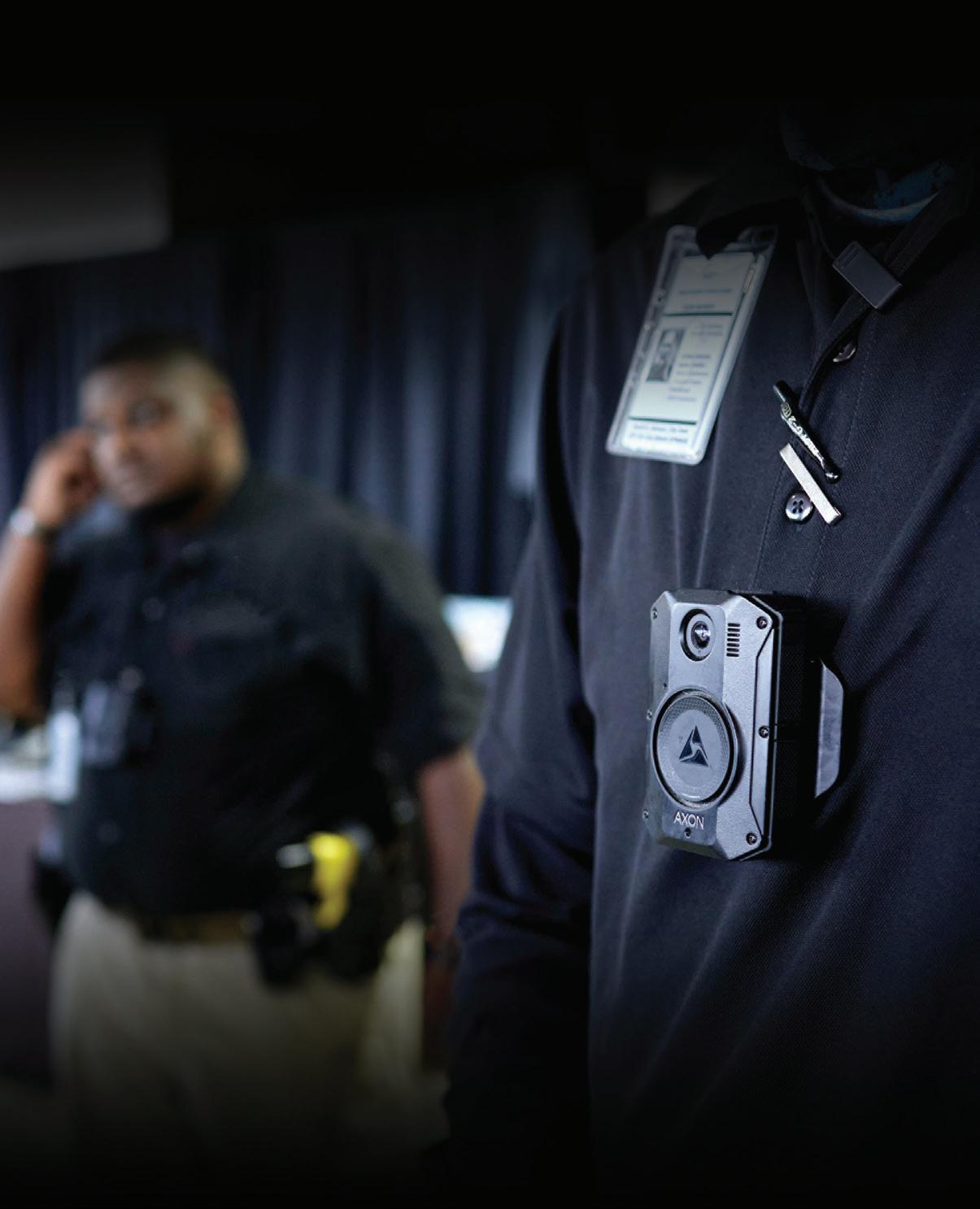
 By Jacque Brittain, LPC
By Jacque Brittain, LPC
Onan autumn day in October of 2022, a split-second decision changed lives. The event occurred at a Home Depot store in Hillsborough, North Carolina where employee Gary Rasor was working in the store’s garden center. Surveillance footage shows the seasoned employee quickly stepping out of the garden center booth to approach a masked suspect as he is attempting to exit the store with a shopping cart filled with three pressure washers.
Rasor attempts to step in front of the suspected thief and extends his arm while trying to deter the alleged theft. However, when confronted, the suspect can be seen thrusting a forceful right arm, violently shoving the employee to avoid detention. Rasor stumbles to the concrete floor while the suspect continues to push the cart out of the store and flees the scene.
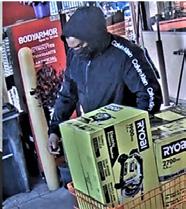
As Rasor falls, he can be seen hitting his head on a potted plant as
he violently hits the concrete. The 83-year-old man was left unable to walk, enduring a broken pelvis and hip as well as suffering a mild heart attack. His condition continued to deteriorate as the weeks passed, and on December 1st, he died due to complications from his injuries. Police have confirmed his death was linked to the injuries he suffered, and the medical examiner ruled his death a homicide.
“We are heartbroken by the loss of our associate Gary,” said Margaret Smith, a spokesperson for The Home Depot. “He was an amazing friend, husband, father, and grandfather, always willing to help anyone. Hillsborough associates just celebrated his 83rd birthday with him. Right now, our top concern is supporting his family and our associates during this difficult time.”
Rasor worked at the store for nine years. His wife said that she and her husband had plans to retire, travel, and meet their new grandchild for the first time. The couple had bought plane tickets to visit family during the holidays, and never gave up hope that he would recover from his injuries. Rasor was an Army veteran who throughout his life worked in various industries before moving to Durham and working at the Hillsborough Home Depot. He is survived by his wife, son, two daughters, three stepdaughters, nine grandchildren and six great-grandchildren. His son Jeff added: “It’s just beyond our comprehension that someone would do this for a couple of power washers…that just is mind-boggling.”
There are very few of us that can’t relate to the actions Rasor
took on that day as he attempted to confront the man exiting the store. Well known as a good and honest man, he was simply looking to do what he thought was responsible and the right thing. Considering the entire episode happened in a matter of seconds, there was little time to process how to respond or what the potential outcome might be.
What can’t be anticipated is the moral compass of the individual on the other end of the confrontation, their standard of conduct, their aggressive nature, or their motivation to steal. We can’t fully grasp the desperation to escape rather than facing the consequences of their actions. It wouldn’t be known whether the individual has a weapon, or even accomplices that might assist in the criminal conduct.
Investigators diligently sought leads in the months following the theft. Public support was also very strong, with numerous media outlets posting the suspect’s image and asking for assistance in identifying the perpetrator. Then on January 24, 2023, police arrested a man in connection with the incident.
Based on the investigation, Terry McAnthony McMillian Jr., 26, of Durham, North Carolina was arrested and charged with first-degree murder and robbery. According to court records, McMillian has a long history of criminal conduct, speckled with numerous thefts and other violent crimes and behavior. Having already faced a mountain of criminal charges as a young adult, he now faces up to life in prison without parole.
All of us tend to see the world through our own eyes. But there is always the potential for an individual like this to be on the other end of that confrontation. There’s nothing in the store that’s worth that risk. In this situation a life was lost, and another faces the prospects of a life behind bars.
“When someone is in the commission of certain enumerated crimes and during the commission of that crime commits an act that results in a person’s death, they can be charged with first-degree murder under the felony murder rule,” said Jeff Nieman, district attorney for Chatham and Orange counties in North Carolina.


In the case of Gary Rasor, what began as a theft took a terrible turn. A dedicated and loyal employee, valued by his company and loved by his family and friends, tragically got in the way. In a matter of seconds, lives changed, a family grieves, and a community mourns.
Unfortunately, Jeff Rasor’s comments point to a disturbing trend that has taken the retail industry by storm over the past several years. While it may be beyond our comprehension that someone would do this for a couple of pressure washers, it’s more complicated than that. This is likely not a case of shoplifting, but rather a glimpse of what has become a multi-billion-dollar problem. Rather than “a couple of power washers,” this is a much more serious threat to our employees, our customers, our stores, and our communities.
some circumstances, people are getting killed. Make no mistake—ORC is organized crime. Theft operations can range from simple to extremely complex, and teams can steal thousands of dollars’ worth of merchandise in a single day. Multi-million-dollar cases have become far too common, with operations evolving into criminal enterprises rather than isolated thefts.
Unfortunately, that’s only part of the story. According to the National Institute for Occupational Safety and Health, working in the retail industry is one of the highest risk jobs for workplace violence. In an environment where we invite the public into our stores—where money is handled, products are available, and individuals of varying means and agendas are received, violence can come in many forms, from verbal abuse and threats to physical violence.
“We’re definitely seeing an increase in violent behavior, especially when the incident involves ORC.”
- Sergeant Rich Rossman, CLEAR presidentThree pressure washers are not exactly what one might expect to be stolen for personal use and were more likely stolen to be resold for financial gain. Based on the available information, it can be strongly speculated that this $837 theft was an incident involving organized retail crime rather than a simple case of shoplifting.
Organized retail crime (ORC) can operate on a local, regional, national, or international scale. These intricate criminal operations are responsible for tens of billions of dollars in losses each year and can devastate a retail business. Considering the potential financial gains, many of these incidents are becoming exponentially more violent. People are being threatened. People are getting hurt. And in
Among the most potentially volatile situations are those involving ORC. While most customers are honest, hard-working people that simply wish to buy the things they want or need, we also occasionally deal with individuals attempting to acquire those products without payment. To get the things they want—or to use those goods to get other things they want—some people steal. However, it’s dealing with the actual event and confronting those that have followed through on these poor decisions where things can get much more complicated.
Unfortunately, these incidents have become far too common. And while ORC has been on the rise for some time, there have been increased levels of violence, threats, intimidation, and use of weapons by those stealing from retail stores over the past several years.
“We’re definitely seeing an increase in violent behavior, especially when the incident involves ORC,” says Sergeant Rich Rossman, president at the Coalition of Law Enforcement and Retail (CLEAR). “These criminals are becoming more and more emboldened. This isn’t just shoplifting. They are going into the store with a mission and intend to leave the store with that mission completed. If someone gets in the way, that person risks getting hurt.”
There is not a single piece of merchandise in the store worth someone getting hurt, and not a single legitimate retail company will tell you otherwise.Rich Rossman
According to the National Retail Federation’s 2021 National Retail Security Survey, 57 percent of retailers indicated a rise in ORC. These changes coupled with new law enforcement and prosecution policies in many cities have impacted store safety, with 65 percent of respondents reporting that ORC teams are showing higher levels of violence and aggression than ever before.
have implemented a “hands off” approach, with policies and programs strongly discouraging associates from confronting those committing thefts or attempting to stop individuals as they attempt to exit the store.
Even the loss prevention teams are now schooled on dealing with these individuals. “Knowing when to let it go” has become an overriding principle, with LP teams trained to avoid situations
In LPM’s 2023 Violence in the Retail Workplace survey, more than 90 percent of retail respondents indicated the threat of violence as the result of shoplifting and ORC has increased in their area of responsibility over the past five years, with 55 percent reporting it has significantly increased.
“I have never seen such a disregard for life, people’s safety, and overall lack of regard in the last few years than in my entire 25-year career in risk,” claims one respondent.
This is not the same as dealing with an angry or disgruntled customer. We never know exactly who we are dealing with or what we might face. Fear and desperation are completely different emotions, and the results can be unpredictable. From the thief’s perspective, the consequences can include everything from embarrassment to a loss of personal freedom—an outcome that many will try to avoid at all costs. Situations can turn violent, and someone can end up getting hurt.
It’s through our ability to safely and effectively navigate that critical point of confrontation that the situation will be successfully managed—or pivot into something that we didn’t want or expect.
To help mitigate risk, retailers are working diligently to improve training and awareness, instilling practices to help keep employees and customers safe. With the increasingly aggressive nature of these individuals, many retailers have scaled back intervention at the store level. Many
that can put themselves and others in harm’s way, and strictly prohibiting the pursuit of individuals beyond designated bounds.
This does not imply that the problem is being ignored or minimized. On the contrary, retailers are now using dedicated teams that operate beyond the stores to target those involved in ORC crimes, including the fences and third-party interests where most ORC merchandise is sold. They are working diligently with employees to improve training and awareness, learning more about what to look for. Systems for store personnel to report activities and track data are now in place to pass information on to ORC teams for investigation. Many are allocating additional technology resources and capital to support these efforts and encouraging LP personnel to participate in organized retail crime associations to further support these efforts.
Many companies—with The Home Depot among the industry leaders—have taken significant steps forward working with other retailers, our local, state, and federal law enforcement partners, and district attorneys across the country to identify current trends, educate, provide essential resources, and build strong investigations. They are establishing exceptional relationships to battle the ongoing wave of issues and working with lawmakers to instill meaningful change in legislation to help turn the tide. But there is still much more that needs to be done.
Legislation must increase to match the threat that store employees and customers are

facing. We can no longer tolerate looking at these issues as simple property crimes and minimize the impact this is having on our society. Working together, we’ve made strides. But legislators must stop the political posturing and step up to the plate. All of us need to work together to find real solutions that make sense.
The most important thing that you can do is be smart and stay safe. Every retailer will tell you that you have a responsibility to protect the assets of the company. However, what’s critical to understand is that our most important asset is our people. Our overriding responsibility is to keep the employees and customers safe. There is not a single piece of merchandise in the store worth someone getting hurt, and not a single legitimate retail company will tell you otherwise.
Make informed decisions whenever possible, digesting all available information, analyzing the potential outcomes, benefits, and risks, and determining which course of action is best under the circumstances. When it comes to ORC, this is crucial.
Sometimes decisions are made in an instant, and we don’t always have the option to think it through. But in that instant, the world can change. That’s when it’s most important to rely on what we’ve learned and respond accordingly.
Confronting a potential thief always carries with it the potential for an unpredictable outcome. It’s critical to remain alert and aware, prepared for the unexpected, and know how to react. Most importantly, this also requires having the judgment and fortitude to let it go when the situation calls for it. It could end up being one of the most important decisions you’ll make
Jacque Brittain, LPC, is editorial director for LP Magazine. Prior to joining the magazine, he was director of learning design and certification for Learn It Solutions, where he helped coordinate and write the online coursework for the Loss Prevention Foundation’s LPC and LPQ certifications. Earlier in his career, Brittain was vice president of operations for one of the largest executive recruiting firms in the LP industry. He can be reached at JacB@LPportal.com.
90 percent of retail respondents indicated the threat of violence as the result of shoplifting and ORC has increased in their area of responsibility over the past five years.
In the summer of 2022, the Retail Industry Leaders Association (RILA) and the National District Attorneys Association (NDAA) entered into a first-of-its-kind national partnership to combat organized retail crime and habitual theft. The launch followed a groundbreaking Retail Theft Roundtable that brought together leading retailers and prosecutors’ offices from around the country to establish open lines of communication. The goal was to identify common challenges, share information on repeat offenders,
capture trends, develop training materials, and ultimately do more together to identify criminal networks targeting local retailers. Nearly a year later, the partnership is already paying
dividends. Prosecutors and retail asset protection teams from some of the nation’s largest and most sophisticated retailers are collaborating on cases, sharing data, identifying organized rings

By RILA
“Our collective approach is a model for how the public and private sector can join forces to address the degradation of communities sparked by the wave of retail theft and violence across the country.”
— Nelson Bunn, Executive Director, NDAA
operating within communities, and developing strategies to ensure these rings can no longer operate with impunity.
“We’ve already exceeded expectations, and it’s because retailers and prosecutors were clearly hungry to collaborate,” said RILA Senior Executive Vice President For Retail Operations Lisa LaBruno. “This partnership isn’t a blue ribbon committee, it’s a collaboration juggernaut. Since our first organizational meeting, retailers and front line prosecutors have hit the ground running and are already building cases against known offenders. It’s been a wildly successful start. We’re not sharing hypothetical best practices; we’re already sharing success stories.”
The challenge to tackle organized retail crime and habitual theft is complex, but the retail industry is making progress in the fight. Over a dozen states have launched organized retail crime task forces and passage of the federal INFORM Consumers Act will make it harder for criminal networks to fence stolen product anonymously online. While these wins are incredibly important, it’s the local prosecutors who often control case disposition and the consequential impact on communities, said LaBruno. “Activity in Washington, DC—transparency, collaboration—collectively, these wins will help stem the tide of retail theft. But it’s the local district attorneys who are vested in their communities, hold the get out of jail free card, and are uniquely positioned to achieve the desired outcome (incarceration vs. rehabilitation).”
NDAA Executive Director Nelson Bunn said the partnership is a unique opportunity for local governments and private industry to join forces to address a shared problem, pooling resources and expertise to find tangible solutions.


“Too often, local governments and the private sector operate in their own silos. Our partnership with RILA empowers retailers and district attorneys to break down barriers and work together,” said Bunn. “Our collective approach is a model for how the public and private sector can join forces to address the degradation of communities sparked by the
wave of retail theft and violence across the country.”
Bunn also made clear that organized retail crime (ORC) is a problem touching every part of the country. “ORC isn’t just an urban problem, its impacting rural and suburban counties too. This is a problem that cuts across demographics and political lines,” said Bunn.
Building cases against criminal rings and habitual theft offenders is no easy feat, especially when criminal activity spans jurisdictions and involves boosters and other criminal actors who may be difficult to identify. When a district attorney concludes that there is insufficient evidence to pursue prosecution, it can be demoralizing for investigators who have spent months building a case. Collaborating early on when building investigations enables prosecutors and retailers to fill evidentiary gaps along the way, so when it comes time for arrest
or grand jury presentment, there’s a level of assurance that the case has legs.
“Retail theft investigations and prosecutions—especially those involving sophisticated ORC rings—are like putting together a puzzle,” said LaBruno. “When pieces are missing, you have an incomplete picture of the crime. That’s why it’s crucial for retailers and prosecutors to collaborate…to find the missing piece together.”
“ORC is leading to more brazen, more violent attacks in retail stores throughout the country, and many of the criminal rings orchestrating these thefts are also involved in other serious criminal activity,” said Homeland Security Investigations Acting Executive Associate Director Steve Francis. “Tackling this growing threat is important to the safety of store employees, customers, and communities across the country.”
“The partnership between retailers and district attorneys on retail theft cases will pay dividends for entire communities,” said Bunn. “Model investigation and prosecution programs will help identify the worst offenders and seek to impose sentences that are aimed at reducing recidivism, which in turn enables stores to thrive and preserves the vibrancy of local communities.”
In April at the RILA Asset Protection Conference, the 2nd Annual Retail Theft Roundtable will once again attract district attorneys and asset protection executives from across the country to brainstorm on their most pressing challenges, share best practices, and problem solve together. District attorneys planning to join us in Denver will travel from California, Colorado, Florida, Illinois, Kentucky, New York, Texas, and other states experiencing a broad range of challenges when it comes to combating retail theft.
“Retailers are extremely grateful to continue this collaboration and given the progress we’ve made in less than a year, I am supremely optimistic that our work will pay dividends for communities all across the country,” said LaBruno.
Steve Francis Nelson Bunn“ORC is leading to more brazen, more violent attacks in retail stores throughout the country, and many of the criminal rings orchestrating these thefts are also involved in other serious criminal activity. Tackling this growing threat is important to the safety of store employees, customers, and communities across the country.”
—Steve Francis, Acting Executive Associate Director, HSI
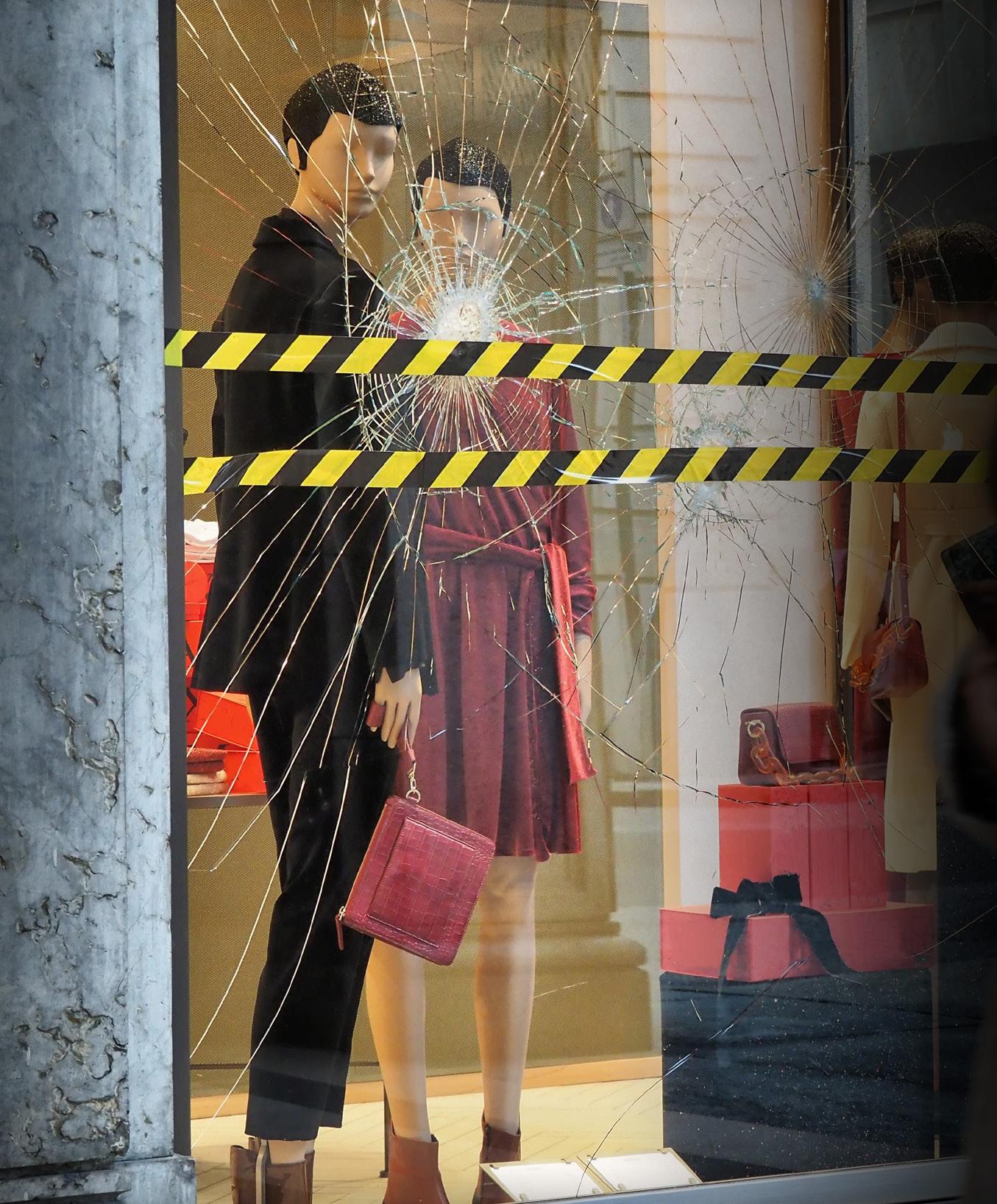
As Violence Against Retail Associates
Continues to Rise, LP Professionals Must Find New Ways to Keep Employees Safe.
By Courtney WolfeWhile employee safety has always been a priority in retail organizations, the recent increase in violent incidents has brought the issue front and center for LP leaders, even becoming the number one concern for many. Of those who answered LPM’s Violence in the Retail Workplace Survey, approximately 60 percent said they had witnessed an incident of workplace violence within their company in the past year. Providing more details, 23 percent of survey respondents said they were a victim of verbal assault, 14 percent said they were a victim of physical assault, 10 percent said they were the victim of bullying or emotional assault, and 3 percent said they were the victim of a sexual assault.
“In the past seven months, I have had to investigate the shooting death of an employee on our sales floor, the shooting of a guard that was hospitalized for several months, and countless assaults on our employees and guards by people who believe they are entitled to steal from our store without being approached,” one survey respondent candidly reported.

“Incidents involving shoplifters are growing in terms of risks to employees interacting with individuals with malicious intent,” said another. “Many weapon-related [incidents with] pepper spray, verbal, and even physical abuse of employees continues to grow.”
The evidence of this increase in violence is all over the news as well, with outlets across the country—and even across the pond in the UK—reporting on incidents of retail employees being violently attacked daily.
“Employee safety has always been a number one priority, particularly among loss prevention professionals, but in recent years not only have we seen an increase in gun violence, but also in aggression relating to shoplifting and ORC groups,” Amanda Hobert, president of the Metro Area Organized Retail Crime Alliance (METRORCA), told LPM. “Additionally, we’ve seen flash mobs, robberies, and even weather-related safety concerns. I think the pandemic’s impact on the economy has created a situation of desperation for many who turned toward these behaviors to survive. Many retailers have a hands-off policy when it comes to stopping an offender,
which unfortunately most of them know and take advantage of.”
While the idea of ORC groups causing this uptick in violence has been debated by some, other LP professionals we spoke with affirmed this belief.
“Recently we have seen many ORC groups escalate to more violent behaviors and involve the use of weapons in committing crimes,” said Chad McManus, chair of the Georgia Retailers Organized Crime Alliance (GROC). “As criminal groups become more brazen, the safety of employees is increasingly at risk. Over the past two years, there has been an increase in physical assaults on store associates, and assaults on employees using weapons.”
Others were quick to point out that it’s ORC combined with the pandemic and changes in law enforcement policies that has created the perfect storm responsible for the increase in retail violence.
“Employee safety issues have been consistent since I started in the industry [in 1995] but there was a dramatic uptick in 2020 following the COVID-19 pandemic and policing reform topics the country faced,” said Marty Andrews, vice president of loss prevention at VF Corp. “The pandemic was a catalyst for erratic behavior to become more acceptable as customers wanted to state or show their opinions on COVID, social distancing, and mask requirements. Then ORC increased dramatically, so the magnitude of incidents compounded with the violent nature and fearlessness of repercussions has heightened safety concerns.”
Julie Giblin, vice president of loss prevention and safety at Ulta Beauty, added that safety priorities in retail have shifted from traditional workplace safety to a more holistic approach that includes associate health,


wellbeing, and a culture of care which extends beyond the workplace. The pandemic cued a significant shift in how our industry cares for the health and safety of associates, whether in stores, distribution centers, offices, or working remotely.
“Today, retailers are facing new challenges such as aggression and violence in and around the workplace, heightened ORC activity, the impacts of a global pandemic, and associate experiences at home which can impact the workplace,” Giblin said. “Today’s news is different. We are all seeing more displays of aggressive behavior, intimate partner violence, suicide and self-harm, and tragic mass shootings across our country in public spaces like malls and shopping centers than ever before.”
The threat of active shooters alone is a marked difference from LP concerns of the past.
“Active shooter threats are a concern now more than ever, not just in stores, but in any communal venue or event,” McManus said.
According to the FBI, active shooter incidents in 2021 surged by more than 50 percent from 2020 and nearly 97 percent from 2017. Of these, the two shootings that caused the most casualties happened at workplaces. A shooting at the FedEx Ground Plainfield Operations Center in Indianapolis in April 2021 and a shooting at a Kroger in Collierville, Tennessee in September 2021 both resulted in fifteen casualties.
The FBI has yet to release its Active Shooter Report for 2022, but it’s expected to be even more devastating, as incidents of shootings, especially in retail establishments, were prevalent in the past year. In May 2022, a 19-year-old killed ten people in a racist mass shooting at a Tops Friendly Market in a predominantly black area of Buffalo, New York. Two separate Walmart stores also saw mass shootings in the past year. One

“Employee safety has always been a number one priority, particularly among loss prevention professionals, but in recent years not only have we seen an increase in gun violence, but also in aggression relating to shoplifting and ORC groups.”
—Amanda HobertChad McManus, CFI, CFE, LPC Marty Andrews, CFI Amanda Hobert
was carried out by a manager who opened fire on employees gathered in a break room in Chesapeake, Virginia the Tuesday before Thanksgiving, killing six people. In Evansville, Indiana, a former employee opened fire and critically wounded one victim.
“Active shooter threats are one of the biggest things that are top of mind for myself, as well as a question I am confronted with regularly: Are
handling safety issues and concerns. With that there is a curve to regain that experience.”
Amanda Hobert cited this labor shortage as just one piece of the domino effects the pandemic caused.
“With employees stretched thin among stores and departments, it makes it easier for our ORC subjects to take advantage of the situation and get away with large quantities of
organized retail crime and corporate investigations at CVS Health.
Julie Giblin said her team must take special considerations with 92 percent of their employees being women.
“While we are not a lesser gender, we are more readily targeted or at risk in many of these dangerous scenarios,” she explained.
“Today’s news is different. We are all seeing more displays of aggressive behavior, intimate partner violence, suicide and self-harm, and tragic mass shootings across our country in public spaces like malls and shopping centers than ever before.”
our teams ready? Do they know how to respond?” Andrews asked. “Active shooter situations are an impossible situation to provide comfort on. People struggle with the simplicity of whether to run, hide, or fight. All active shooter situations are unique, and in the moment, you must decide which one of the three options you are going to take while also recognizing you may be forced to pivot from one option to the other.”
Active shooter training is no doubt a necessity for any retail organization in 2023, but Andrews isn’t the only one worried it might not be enough should an incident happen.
“I’m sure that almost all large retailers have implemented active shooter training for their employees at this point, but if we have newer employees in our stores who are less versed on these procedures, it can have an adverse effect on everyone in the building,” Hobert said.
This touches on another factor adding to the perfect storm of retail violence: the labor shortage. And while this was an issue across most industries during the pandemic, few suffered as dangerous of consequences as retail.
“Worker shortages were something I think all companies navigated during the pandemic,” Andrews said. “The pandemic caused turnover and experience levels dropped. With less experience in the stores, training becomes a priority, but nothing can replace real life experience on
merchandise,” Hobert said. “Again, most of these subjects are aware of our hands-off policies and are aggressive if approached, even from a service standpoint. We also have very green employees in our stores still learning safety best practices and protocols, which certainly impacts overall employee safety.
“Overall, the pandemic made us all react to safety challenges we haven’t faced in the past,” Hobert added. “As we attempted to overcome each concern, new ones arose, like a domino effect.”
It’s clear that LP professionals are finding it harder than ever before to keep employees safe. But what are retailers doing to tackle these challenges? It varies.
“We track all incidents and are continuously evaluating where we are having issues and concerns,” Andrews explained. “Our employees’ and customers’ safety are always going to be our guiding light. Everything we focus on is not putting anyone in harm’s way. Our techniques are on de-escalation. We are also utilizing more third-party security then we have ever had in the past. In certain locations this is a requirement to support the business.”
“We’re leveraging several new innovative technologies, and have revised our shoplifting policy and de-escalation training,” said Ben Dugan, executive director of
Another consideration is that, because Ulta Beauty has proudly promoted thousands of associates into management roles, the organization has many first-time managers on staff who may not have been previously exposed to workplace violence, aggressive behavior, shoplifting, or ORC. Because of this, they may not readily recognize the signals that a coworker is experiencing something harmful outside of work such as pressures with work, school, family, and relationships. Giblin said that women are more likely to be victims of violence, especially intimate partner violence, which can impact workplace safety.
“Ulta Beauty continues to invest in health and safety training, technology, and a comprehensive workplace violence prevention program led by a cross-functional team in partnership with workplace safety consultants and experts in crisis management and threat assessment,” Giblin said. “Every company should have programs in place—not only because it’s the right thing to do, but also because the foundation allows for evolution as culture shifts. This pushes companies to stay relevant and ensure they are reflecting employee needs and workplace realities of the moment.”
Many retailers are also turning to new technologies to help them solve these complex challenges. Dugan said his team is using subject identification tools, product protection devices, time delay safes, and more.
Andrews said he’s always evaluating options and looking for the best strategies to keep employees (and customers) as safe as possible.
“I am someone that is never satisfied until a problem is completely rectified,” he said. “We are not there yet, so I will be open to any and all options and truly appreciate out of the box thinking.”
For some, recent advancements in artificial intelligence and technologies like face matching and body-worn
continued on page 34
“As criminal groups become more brazen, the safety of employees is increasingly at risk. Over the past two years, there has been an increase in physical assaults on store associates, and assaults on employees using weapons.”
— Chad McManus, CFI, CFE, LPC
—Julie Giblin
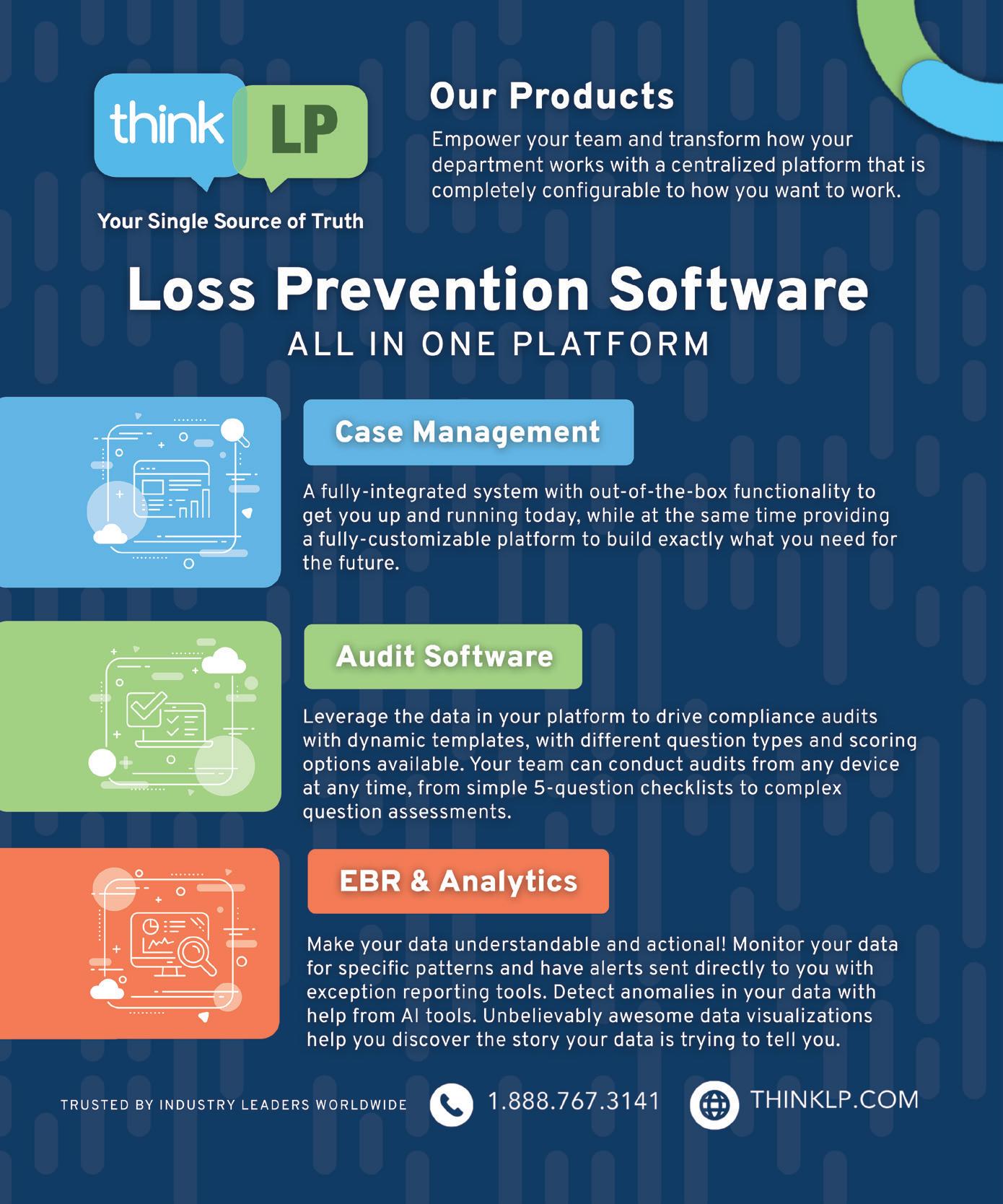
cameras might be the answer. But with any technology, Hobert reminds retailers that training is key.
“I’ve read of some businesses exploring the idea of face matching technology to prevent safety incidents, but I don’t think there’s any specific technology as much as the utilization of the technology where we have to ensure our employees are trained correctly and effectively,” she said.
Strong partnerships are also crucial in the fight against ORC and keeping employees safe. “Having a relationship with your local police department, landlords, mall offices, and neighboring retailers is a critical component to helping with safety,” Andrews said. “I am seeing more cross-collaboration and concerted efforts to work together to tackle safety issues we are all facing.”
Dugan said that CVS Health even introduced local ORC positions to maintain these relationships.
Most states also have Organized Retail Crime Alliances (ORCAs) where
“Having the knowledge that certain offenders may be violent is very crucial to our safety,” Hobert said. “A lot of this intel comes directly from our law enforcement partners, as they understand the challenges we face in retail. As for other connections, [we need to support] each other. There have been countless times that I’ve learned from another retail partner that a specific group or subject is violent, which in turn ultimately helps to keep our employees safe.”
Legislative efforts could also help to ease retail violence. Multiple states have already passed laws that enforce stricter punishments for shoplifters, especially those who become aggressive toward employees or customers.
“It is my belief that until there are consequences for these criminal acts that are happening in our retail locations, we will not see a change,” Andrews said. “Without the support of the local police departments and prosecutors, we are left with all bark and no bite on these issues. It is going to take collaboration of retailers voicing the same concerns and demanding change. If this does not
said. “The problem is not going to go away, and I see it just gaining more momentum. We must get effective policing and laws that punish crimes, and are then upheld by the prosecutors. We have been rapidly heading in a direction I never imagined we would see. The efforts must start immediately.”
Some retailers disagree that inflation and economic pressures increase ORC and violence in stores, but Hobert believes there is a mounting sense of desperation among people as a result of the pandemic and the deteriorating economy. “I don’t know if [this desperation] will grow worse, but the tide might take a while to change,” she said. “In unprecedented times, retailers have pivoted quickly to respond to the challenges we’ve all faced. With employee safety being one of those challenges and a top priority, I think we’re all in a sturdy position to prevent it as best we can.”
McManus is also confident that retailers are taking the necessary steps to assuage the retail violence epidemic. “We are seeing a trend of increased violence, and with eyes wide open, retailers are proactively responding and putting measures in place to ensure a safe workplace and secure environment for customers,” McManus said.
When it comes to ORC and retail violence, it seems that most retailers can agree on one thing: the only way we can beat these issues is to work together.
they can connect with other retailers and find support.
“GROC was founded on partnerships and the sharing of information to keep our stores, consumers, and communities safe,” McManus said. “Throughout the pandemic we have continued to hold our annual conference (albeit virtually) and monthly intel sharing meetings. Sharing trends, identifying suspects, and the exchange of information among retailers is vital in the fight against ORC. We are stronger together and are all working toward the same goal.”
METRORCA, which provides support to New York, New Jersey, and Pennsylvania, shares information about violent offenders and more with its members. Law enforcement, Hobert says, is another important source of information on safety risks.
happen, we will continue to see retailers closing their doors for the simple fact that they are not profitable and cannot operate a safe environment for their employees and customers. The fact that we are seeing this happen and businesses openly talking about losses impacting overall profits is a step in the right direction, but it is going to take more to move the needle.”
With rapidly increasing inflation and a recession potentially looming, it’s easy to wonder at just how much worse retail violence could become, especially if more strict legislation doesn’t pass on a national level.
“The issue is going to continue to grow unless we see changes,” Andrews
“We strongly believe in the power of partnerships with retailers, solution providers, and law enforcement agencies,” Giblin said. “And most importantly, we believe we are better because of the consistency and rigor we bring to operating as a people-first company. To win at ORC, the entire industry needs to work together, sharing learnings and insights along the way. Our hope is that in doing that, we can deter this behavior for all stores and all cities.”
Courtney Wolfe is managing editor digital focusing on expanding the magazine’s digital content and reach. She most recently was managing editor for SDM Magazine, a trade publication for security systems integrators. She received her bachelor’s degree in multimedia journalism from Columbia College Chicago. She can be reached at CourtneyW@LPportal.com.

“Employee safety issues have been consistent since I started in the industry [in 1995] but there was a dramatic uptick in 2020 following the COVID-19 pandemic and policing reform topics the country faced.”
— Marty Andrews, CFI


Surface Applied
AUTO-BOLT
Securitech’s New Award Winning Multi-Point Locking Solution Ideal For Exit and Entry Doors

TRIDENT™
*Also available with interior lever
Surface Applied
Instant Multi-Point Deadbolt Locking Each Time The Door Closes
Stainless Steel Deadbolts, Projecting 1 Inch Into Frame | Thru-Bolted Anti-Pry Plates Ideal For Retrofit Or New Construction | Up to 5 Locking Points | Optional Wall-Mounted Alarms
Code-Compliant | Exit Only or Keyed Entry | Durable & Vandal Resistant | Bolts Project Into Frame, Not The Floor Access Control Integration | Easy Installation | Fire Rated Models Available




The #1 Multi Point Exit Lock Safely Securing Thousands Of Retail Locations Every Day Learn

 By Sam Boykin
By Sam Boykin
Cryptocurrency is full of contradictions. Bitcoin, the first cryptocurrency, was invented in 2009 by the mysterious Satoshi Nakamoto (presumed to be a pseudonym). The year before he published a famous whitepaper titled “Bitcoin: A Peer-to-Peer Electronic Cash System.” The document detailed the concept of a currency that didn’t rely on the infrastructure of a traditional financial institution. Many see Nakamoto’s invention as a work of innovative genius. Others think it’s nonsense—an overhyped fad that’s destined to implode.
Cryptocurrency is often characterized as a revolutionary tool that helps combat centralized financial power. Yet it also attracts criminals who use it to steal and commit fraud.
There are a lot of gray areas when it comes to cryptocurrency. It’s complicated. But what’s not at debate is that crypto-based transactions and crime are both at an all-time high, and retailers should take note.
The volume of cryptocurrency transactions grew to $15.8 trillion in 2021, up 567 percent from 2020, according to Chainalysis’s 2022 Crypto Crime Report. At the same time, fraudulent transactions totaled $14 billion in 2021, an increase of 79 percent from the previous year. Moreover, from early 2021 to mid-2022, approximately 46,000 people reported losing over $1 billion in crypto scams, which is about sixty times more compared to 2018, according to the Federal Trade
Commission’s 2022 Consumer Protection Data Spotlight.
While crypto-based crime continues to rise, most retailers don’t have to worry about shady characters coming into their stores and using cryptocurrency to fraudulently purchase goods—at least not yet.
“That’s not how it works,” said McDougal, a criminal analyst with the US Department of Homeland Security who specializes in financial investigations, including those involving cryptocurrency.
McDougal said that typically criminals aren’t using cryptocurrency to steal from individual retailers. Rather, cryptocurrency serves as more of a “value transfer mechanism,” and by the time it enters the picture, the merchandise has already been stolen and is working its way up the criminal operation ladder.

In a common scenario, thieves steal merchandise from stores. That merchandise goes to a fencing operation, which then sells it to a bigger supplier higher up the chain. The stolen goods are ultimately converted into cash.
But large amounts of illegal cash are difficult and risky to move and store. And the money can’t be deposited into a traditional bank account because financial institutions have antimoney laundering protocols and regulations in place, which require customer information and other identifying data.
Cryptocurrency, on the other hand, has mechanisms that enable criminals to distance themselves from illicit funds, but it’s a complicated process, and
the ways in which crypto could potentially impact the retail industry continue to evolve.
There are hundreds of different cryptocurrencies, with the most popular being Bitcoin, which represents nearly 70 percent of all cryptocurrency use, said McDougal. Other popular cryptocurrencies include Ethereum, Tether, and USD Coin.
Bitcoin is unique in that it’s the first functional digital currency to run on a blockchain and the first digital currency to be successfully maintained in a decentralized manner. Another unique aspect of Bitcoin is that it’s finite. McDougal said that Nakamoto wrote the cryptocurrency code so that there will only ever be a total of 21 million Bitcoins in circulation.
“Once all those coins are mined, they’re done. There’s no way to go back into the algorithm and add more Bitcoin, and this adds to its value,” he said.
There are currently about 19.1 million Bitcoins mined, and it’s estimated that by 2140 all Bitcoin will be mined. Crypto mining refers to a complex process that requires advanced computer equipment to solve math equations. McDougal said a mining operation often resembles something from the 1980s, with entire rooms filled with a network of CPUs. “It’s very expensive to operate,” McDougal said.
People earn Bitcoin rewards by competing to solve a very complex set of algorithms that includes thousands of verifications, McDougal said.
When it comes to organized retail crime, cryptocurrency is most commonly used to enable the sale of shoplifted goods and stolen account credentials on darknet markets or resale websites, which sometimes accept payment in cryptocurrencies.
“The best option for retailers is to partner with agencies like Homeland Security Investigations or local law enforcement. We have blockchain tools where we can track and trace and figure out who was the individual that withdrew the stolen proceeds on the exchange.”
–Cameron McDougalThe first mining operation to complete the process is rewarded with 6.25 Bitcoins—although that amount is scheduled to be cut in half in May 2024.
McDougal said that in addition to creating new Bitcoin, crypto mining is also the process by which transactions are verified.
When Bitcoin was launched, it was positioned as a currency that could be used for a variety of transactions, from buying a pair of pants to a luxury car. And while a growing number of retailers are now accepting Bitcoin— including such notable companies as Starbucks, AT&T, Microsoft, and e-commerce platform Overstock—the majority have yet to embrace cryptocurrency, especially when it comes to larger purchases, like real estate, for example.
Moreover, when you purchase something with cryptocurrency, in most cases you have to convert the digital funds into fiat money, like US dollars. To convert cryptocurrency like Bitcoin, you generally must go through certain banks or a cryptocurrency exchange, which allows customers to trade cryptocurrencies for other assets, such as conventional fiat money or other digital currencies.
McDougal explains that while you may be able to buy a TV, watch, or even a car with crypto, you can’t put all your assets into crypto and buy necessities like food, housing, medical, and insurance. “At some point, you’re going to have to convert the value you have stored in crypto to whatever fiat currency you use to buy those necessities.”
Whether more retailers accept cryptocurrency in the years to come is a hotly debated question, as there are multiple factors working both for and against it.
Helping bolster cryptocurrency are technological innovations that make cryptocurrency transactions faster and more efficient, including decentralized networks that
enable instant payments across a network of users. And consumers can use a preloaded crypto debit card to make purchases, and the retailer, through partnerships with payment-processing companies, receives fiat money as payment, such as US dollars. Also, the success and widespread use of cryptocurrency ultimately depend on the number of people who accept and legitimize it. While there are still plenty of holdouts, a growing number of regulators and policymakers are supporting cryptocurrency, so it’s no longer seen as an obscure financial oddity.
Even with this momentum behind it, there are still some substantial drawbacks to cryptocurrency. For one, unlike fiat money, cryptocurrency accounts are not insured by the government, so there is typically no bank or other entity to raise a red flag about suspicious transactions.
As opposed to credit or debit cards, where there’s a process in place to help get your money back if something illegal happens, like a fraudulent purchase, cryptocurrencies typically do not come with any legal protections. If something happens to your account or cryptocurrency funds, the government isn’t obligated to help you recover your money. Also, cryptocurrency payments typically are not reversible. Once you pay with cryptocurrency, you can usually only get your money back if the person you paid sends it back.
cryptocurrency is stored in a digital wallet, which can be on your computer, an external hard drive, or online. The wallet has a specific address—a combination of letters and numbers, similar to a bank account number.
While the address links to a specific digital wallet, it doesn’t identify the individual(s) using the wallet. “The thing that makes crypto unique is criminals can move crypto into these wallets and there’s no way for us to figure out who that person is,” McDougal said. “And you can create hundreds of wallets almost automatically on your phone or your laptop.”
However, as a safeguard, most cryptocurrencies use public blockchains, a type of public ledger that lists every cryptocurrency transaction. All digital wallet addresses represent a destination on the blockchain. Blockchain entries usually include information like the transaction amount, date, and time, as well as the sender’s and recipient’s wallet addresses, which can sometimes be used to identify the people involved in a specific transaction.

“A blockchain ultimately allows investigators the ability to trace the flow of funds,” said Kristen Spaeth, a senior investigator on the global intelligence team at Coinbase, a cryptocurrency exchange platform. “If a retailer is able to identify a cryptocurrency address, they have the ability to view detailed information on a public blockchain explorer and ultimately trace the funds to a cash-out point.”

One
is the common belief that it’s anonymous, but as with most things crypto, it’s not that simple. Unlike fiat currency, cryptocurrency, including Bitcoin, only exists electronically. You can use your phone, computer, or a cryptocurrency ATM to buy digital currency. Once purchased,
But Spaeth also pointed out that the majority of blockchain explorers don’t attribute addresses or wallets to known entities. “At that point, the use of a commercial blockchain analytics tool would be incredibly helpful in identifying where the funds were sent,” she said.
Spaeth said that because most major retailers either
continued on page 40
“If a retailer is able to identify a cryptocurrency address, they have the ability to view detailed information on a public blockchain explorer and ultimately trace the funds to a cash-out point.”
Continued from page 38
don’t accept payments in cryptocurrency yet or are just beginning to implement crypto as a payment method, her team hasn’t seen an influx of crypto retail crime. But she has worked on crypto-related investigations that include retail fraud.
One example involved counterfeit-branded goods being sold online for cryptocurrency that ended up being a scam with elements of money laundering.
Spaeth explained that a retailer identified its products being sold on a website in exchange for cryptocurrency and reached out to Coinbase for assistance.
“We were able to trace the payments sent to the website to a crypto exchange which ultimately identified the operator and seller of the counterfeit goods,” Spaeth said. “Despite the common misperception that crypto transactions are always anonymous or impossible to trace, the public nature of the blockchain often offers a huge advantage to investigators. Through further investigation, we were able to uncover that the seller was only claiming to sell the counterfeit items and never actually shipped anything to the purchasers.”
Spaeth said that when it comes to organized retail crime, cryptocurrency is most commonly used to enable the sale of shoplifted goods and stolen account credentials on darknet
markets or resale websites, which sometimes accept payment in cryptocurrencies.
In a typical scenario, a bad actor purchases a victim’s account credentials for anything from a bank account to a department store credit card, likely obtained through a system hack or phishing expedition. If a retail customer has their credit card saved to their account, the bad actor could use it to purchase goods.

“In my experience, gift cards are usually one of the most popular purchases in these situations,” she said. “Because of the traceability of cryptocurrency payments to these markets, law enforcement can identify buyers and trace the marketplace vendor’s cash-out points.”
McDougal said that while it’s difficult to quantify, the US Dept. of Homeland Security is seeing a steep increase in the use of cryptocurrencies in most major crime areas, and that includes organized retail crime. Further, McDougal said that when it comes to cryptocurrency, retailers should be most concerned with legitimizing the sources of funds. Retailers can invest in blockchain technology, which enables them to trace where cryptocurrency funds are going. But retail organizations don’t have subpoena power, so they’re unable to demand documents and other information that may identify the specific individual(s) who eventually receive the funds back on an exchange. He added that there are third-party companies that can
help retailers trace and track cryptocurrency, but they don’t have subpoena power either.
“The best option for retailers is to partner with agencies like Homeland Security Investigations or local law enforcement. We have blockchain tools where we can track and trace and figure out who was the individual that withdrew the stolen proceeds on the exchange,” he said.
McDougal also stressed that if a retail supplier accepts cryptocurrency or pays in cryptocurrency, you can go to blockchain.com to locate its wallet address, which identifies where the funds are sent. If the wallet address is not on a legitimate exchange, like Coinbase or Binance, that’s a red flag. “You’ve got to ask yourself, ‘why am I paying into this account that didn’t require anyone to fill out paperwork, provide identification or undergo a background check.’”
McDougal said that even after years of conducting cryptocurrency financial investigations, he’s still unsure if the digital currency is just a fad or the next big thing. “Even after all this time, I still can’t speculate on that,” he said. “I can see it going either way.”
Originally from North Carolina, Sam Boykin is a San Antonio based writer who has written for a number of regional and national publications, including Men’s Journal, Outside and USA Today. He previously served as editor in chief for the San Antonio Business Journal and managing editor for the Sacramento Business Journal

Cryptocurrency has mechanisms that enable criminals to distance themselves from illicit funds, but it’s a complicated process, and the ways in which crypto could potentially impact the retail industry continue to evolve.
–Kristen Spaeth






Nowthat the INFORM Consumers Act has been signed into law, there is plenty of work to be done by the retail asset protection community to ensure the federal law serves its intended purpose of deterring organized retail crime.
The INFORM Consumers Act—which will insert transparency and accountability into online marketplace transactions—takes effect June 27. Planning for implementation and ensuring the Federal Trade Commission (FTC) and state attorneys general are prepared to enforce the law immediately is a top priority for the Retail Industry Leaders Association (RILA).
The INFORM Act gives state attorneys general or an official or agency of a state the authority to initiate an enforcement action against online marketplaces that do not comply with the law. That means an attorney general can hold an online marketplace accountable if, for example, the marketplace fails to verify highvolume sellers, or a high-volume seller refuses to disclose certain information to consumers.
INFORM will impact retailer investigations once the law becomes effective, and AP teams should start to identify best practices to fully leverage the benefits of increased online transparency.
INFORM imposes new requirements on online marketplaces (OMs) to collect and verify information from high-volume third-party sellers (HVSs), while also requiring OMs to ensure certain sellers disclose specific information on their website. OMs must collect and verify bank account numbers, contact information, tax ID, email address, and phone number. INFORM requires HVSs—those having an aggregate total of $20,000 in annual gross revenue—to disclose specific
identifying information to consumers. In addition to disclosing this information, the OM must provide a reporting mechanism that allows for electronic and telephone reporting of suspicious marketplace activity to the online marketplace.
Retail investigators will be able to see HVS information that was not readily available pre-INFORM. Having that information should reduce time investigators spend on open-source applications trying to figure out a HVS’ verified identity. While it’s not entirely clear how AP investigators
are expressly authorized to enforce INFORM. If investigators experience non-compliance, retailers should share that information with enforcement agencies. RILA will work with member company AP teams to consider how our industry can best tell one story of the collective experience of all retailers.
We strongly believe that marrying the transparency of INFORM with regulatory enforcement in a coordinated effort at the local, state, and federal level to investigate and prosecute criminal actors who sell large quantities of stolen product online is vital to combating organized retail crime. ORC has eroded the vibrancy of communities, and all stakeholders—including online marketplaces—need to work together to address the crime scourge playing out in retail stores across the country.

can leverage the reporting mechanism and the associated obligation of OMs to act on those reports, the Act doesn’t restrict the use of the reporting mechanism to consumers; presumably anyone can use it. Investigators can report that a HVS failed to post required information—or report that product is stolen.
AP teams should have a process for keeping track of the reports they make and resulting actions. More importantly, retailers should compile a clear and compelling “paper trail” to share with the FTC, state AGs, and other state officials who
In addition to federal and state enforcement of the verification and disclosure provisions under INFORM, RILA is also supporting legislation to enact a federal ORC center that brings federal law enforcement, including the Department of Homeland Security, Department of Justice, Federal Bureau of Investigation, and United States Postal Service together to help disrupt and prosecute criminal rings targeting retail stores.
We applaud and support the efforts of the FTC, HSI, FBI, Secret Service, IRS, DEA, ATF, state attorneys general, district attorneys, local law enforcement, and other agencies who are working to dismantle organized retail crime rings. Given the enormous reach of these criminal enterprises that stretches across the country and the globe, it is vital that law enforcement and prosecuting agencies coordinate and
Michael Hanson, Senior Executive Vice President, Public Affairs, RILA
The INFORM Act gives state attorneys general or an official or agency of a state the authority to initiate an enforcement action against online marketplaces that do not comply with the law.
It is vital that law enforcement and prosecuting agencies coordinate and streamline their investigations to ensure resources are pooled, criminal actors are identified, prosecutions cover the full scope of criminal conduct, and punishments truly fit the crimes.
streamline their investigations to ensure resources are pooled, criminal actors are identified, prosecutions cover the full scope of criminal conduct, and punishments truly fit the crimes.
The bipartisan, bicameral Combating Organized Retail Crime Act, introduced in the US House and Senate earlier this year, establishes a Center to Combat Organized Retail
tide of organized retail crime. We recognize the problem is multifaceted and requires all stakeholders to do their part to deter increasingly dangerous and violent crimes against retailers and their employees.

Crime at HSI. The center will combine expertise from federal, state, and local law enforcement agencies as well as retail industry representatives. Coordinating these resources creates a unified government and industry collaboration to fight against the sophisticated criminal rings engaged in retail theft operations.
“Establishing a federal task force that pulls together all the respective agencies that have jurisdiction over organized retail crime is necessary to enhance collaboration and transparency in the fight against sophisticated crime rings. Many of these criminal syndicates are using the profits derived from the sale of stolen goods to fund additional violent criminal activity in our communities such as human trafficking, gun smuggling, narcotics, and terrorism. It makes collaboration between agencies more important than ever,” said Michael Hanson, RILA senior executive vice president, public affairs.
RILA is building a national strategy to help fight against the
Problem solving need not fall entirely on the shoulders of your asset protection team. Innovative technology solutions are showing real promise in the fight against ORC, habitual theft offenders, and violence against store employees. Even more exciting is how vendors are integrating solutions to create an ecosystem of cutting-edge technology in stores and adjoining parking lots that give retailers a leg up on boosters and violent offenders. Imagine this suite of technology installed at a retail store:
● The security unit in the parking lot detects a suspicious actor or incident.
● The unit alerts the body-worn camera technology utilized by in-store asset protection associates and the body-worn camera (BWC) activates.
● The AP associate approaches the subject who is throwing merchandise into a shopping cart.
● The subject flees with the cart full of merchandise and the BWC alerts the cart containment technology.
● When the cart jams, the subject flees with stolen merchandise in hand.
● The cart containment technology alerts the license plate reader technology in the parking lot.
● The reader captures the license plate of the subject’s vehicle as it exits the parking lot.
Admittedly, this scenario may be a bit aspirational. It wasn’t that long ago that AP solution providers operated in silos, rarely seeking opportunities
to join forces with other AP vendors. But something changed. Solution providers started talking to one another, problemsolving together, and integrating solutions that complemented each other. Pilots are underway in the industry to test solution integration focused on ORC, habitual theft offenders, and violent criminals. Retail AP executives collaborate with each other, why not solution providers? It makes all the sense in the world.
Vendor collaboration to address retail theft and violence in stores is alive and well among strategic partners that are part of RILA’s AP Leaders Council, which consists of top-level AP executives from among RILA member retailers. Crime-linking platforms, body-worn cameras, and real-time retail alerts in response to criminal activity are just some of the leading-edge technologies developed by RILA vendor partners.
The innovation and technology solutions available to retailers today are extremely promising. RILA is charging forward on all fronts to stop the tide of ORC. It’s a multifaceted problem that requires multiple parties to do their part.
“Organized theft can be a big hit to a retailer’s bottom line, but even more disheartening is the emotional impact on retail workers who are victims of violence by these brazen criminals and who may have no choice but to watch cartloads of unpaid for merchandise leave their store,” added LaBruno. “But the days of hiding behind fake screen names to fence stolen product online is coming to an end—with INFORM, better transparency, more resources, and enhanced collaboration across all stakeholders, these criminal networks better get the message: We’re coming for them.”
RILA is building a national strategy to help fight against the tide of organized retail crime.
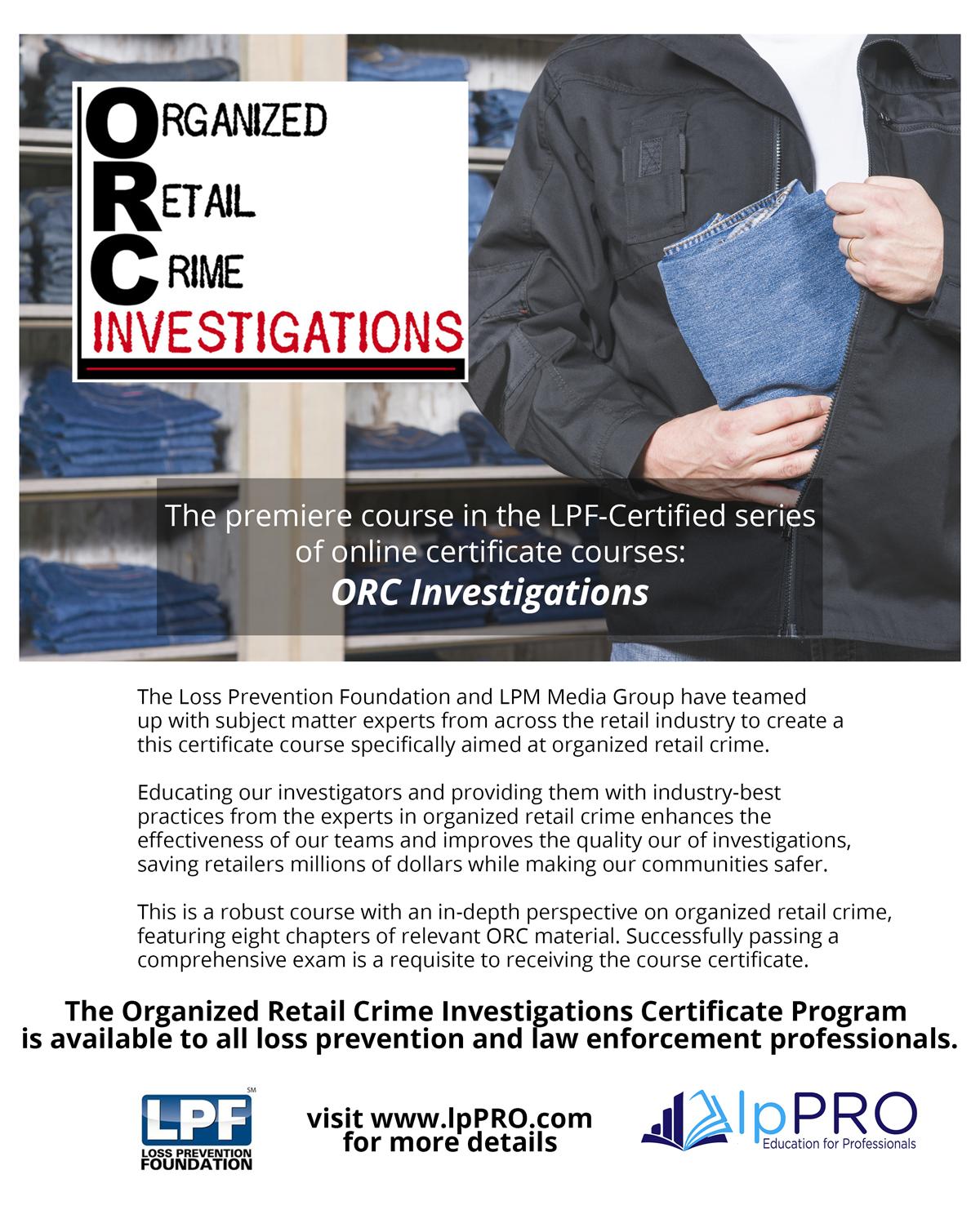
Stop talking so much. The goal of an investigative interview is to obtain as much intelligence as possible. With the limited time that an ORC interview provides us, the more the investigator is talking means the less opportunity for the subject to provide information.
Interviewing those that are suspected members of an organized retail crime ring requires a strategic approach and preparation. These conversations may vary in context, taking place in a loss prevention office, on a roadside stop, or in custody at a police station. Based on the subject and other variables, a fact-gathering cognitive interview may be appropriate whereas others may require a more strategic approach using the Participatory Method. Regardless of these above variables, there are several mistakes interviewers make that cause them to fall short of their ultimate goal in identifying actionable information. Poor question structure, insincere rapport, and the unnecessary escalation of a conversation are just a few of the problems we often see. Here, we’ve explored a few other common issues that, if fixed, can result in obtaining more information with less resistance.
To be a good interviewer, you must be a great listener. During a conversation with a suspected ORC member, there may be several key points of information sprinkled throughout. An aggressive interviewer may be so focused on their next question that they could miss critical disclosures or admissions made by the subject. “We usually don’t hit stores like this” or “We took the van this time” both suggest the need for follow-up questions to obtain additional intelligence. Being too quick to jump to the next topic causes an interviewer to miss out on words like “usually” or phrases such as “this time”.
Scan the QR code and answer questions about this article to earn CEUs towards your CFI designation or to learn more about the advantages of becoming a Certified Forensic Interviewer.


Many organizations provide their investigators with an ORC questionnaire or checklist of items to ask the subject about. Consistency in this process is important, and with proper training can
be executed at a high level. However, interviewers must also be adaptable. As an example, if the subject is becoming resistant to implicating others involved, the interviewer should transition to a different topic and re-establish rapport. Continuing down a script in linear fashion may increase resistance from the subject, come across as insincere, and allow for the interviewee to simply answer all questions in the negative.

Stop talking so much. The goal of an investigative interview is to obtain as much intelligence as possible. With the limited time that an ORC interview provides us, the more the investigator is talking means the less opportunity for the subject to provide information. There needs to be a strategic dialogue, and obviously some guidance by the interviewer as to the process. However, when we ask a question, we should actually listen to the entire response. Impatient interviewers are often observed interrupting a subject or redirecting their response. This tactic will aggravate the subject, contaminate their memory recall, and most likely result in obtaining less information.
Lying about evidence poses a whole series of problems, including the risk of obtaining false information. Investigators in ORC cases may feel the need to embellish their evidence in effort to establish greater credibility in the investigation, but lying about evidence is not the appropriate way to do so. Instead, educating the subject on the tools available for an investigation through a transparent process will establish credibility for the investigator without having to present false information. The investigator does not have to disclose all their trade secrets,
but simply explaining resources such as digital video, information sharing, and data analytics will allow the subject to understand how comprehensive the investigation can be. If this is communicated properly, it allows the investigator to maintain credibility while also building trust with the subject by being transparent of the process.
One of the biggest mistakes made by investigators is being siloed into a confession-driven approach. These interviews should not be aimed at obtaining the “I did it”, but instead toward a larger scope of obtaining as much information as possible. Investigators should have a list of topic areas they wish to explore (relative to the case) allowing them to maneuver through a wider scope of information outside of a simple shoplifting incident. When we are solely focused on a confession, we enter the conversation with a presumption of guilt (and a limited scope). Instead, investigators should be open to alternative explanations as well as the knowledge that the current person of interest may be the tip of an iceberg of a much larger investigation. In the era of information sharing and collaboration with law enforcement, interviewers play a crucial role in obtaining as much accurate and reliable information as possible.





















